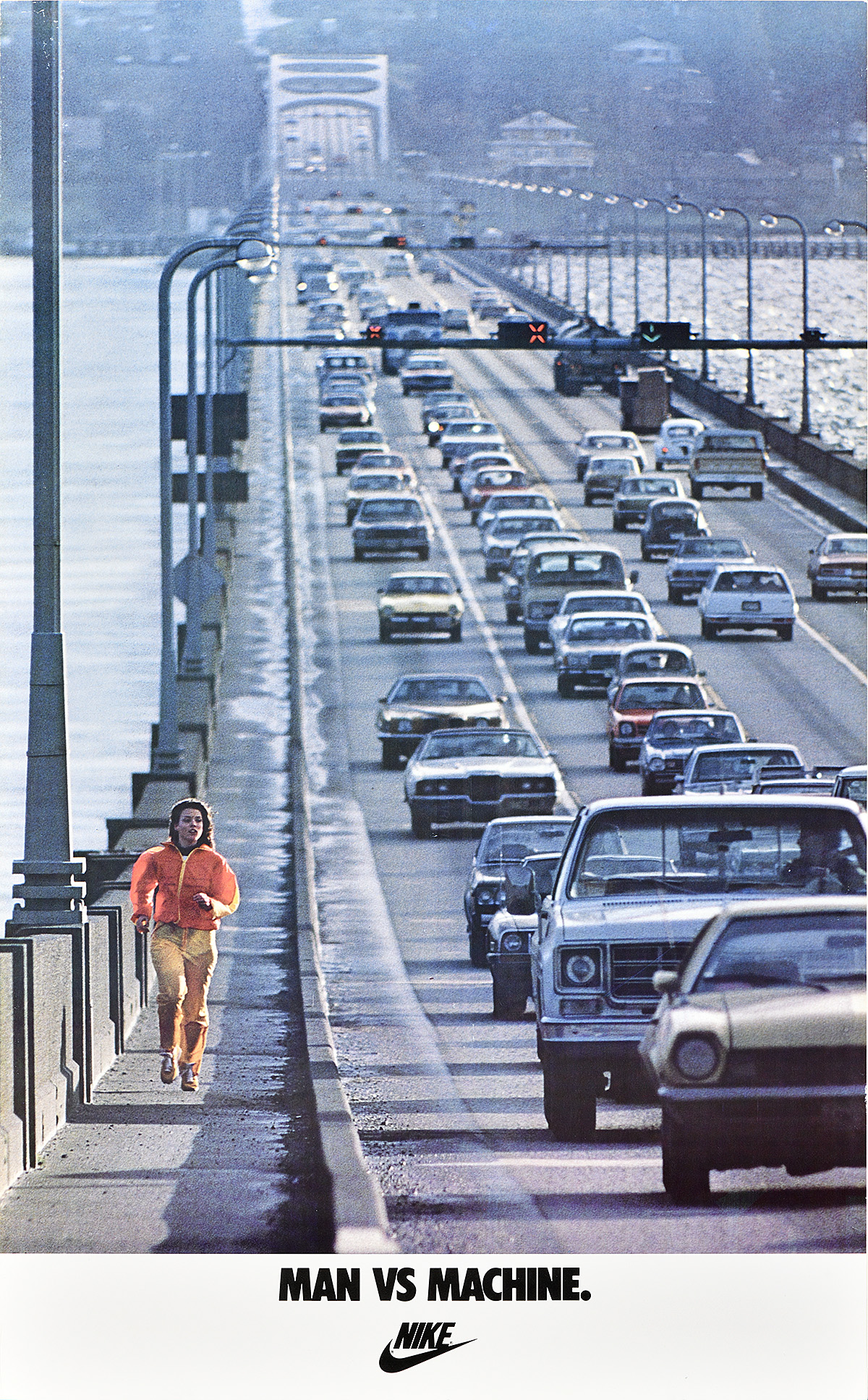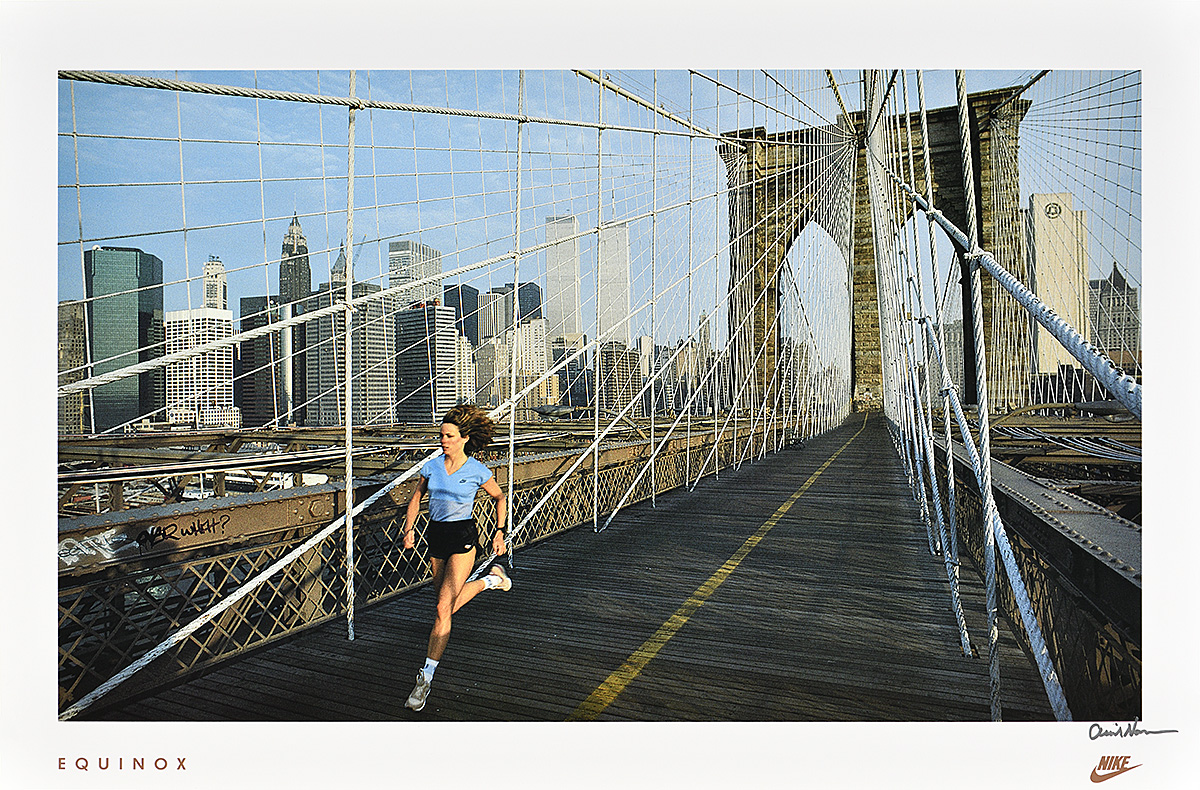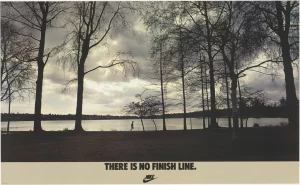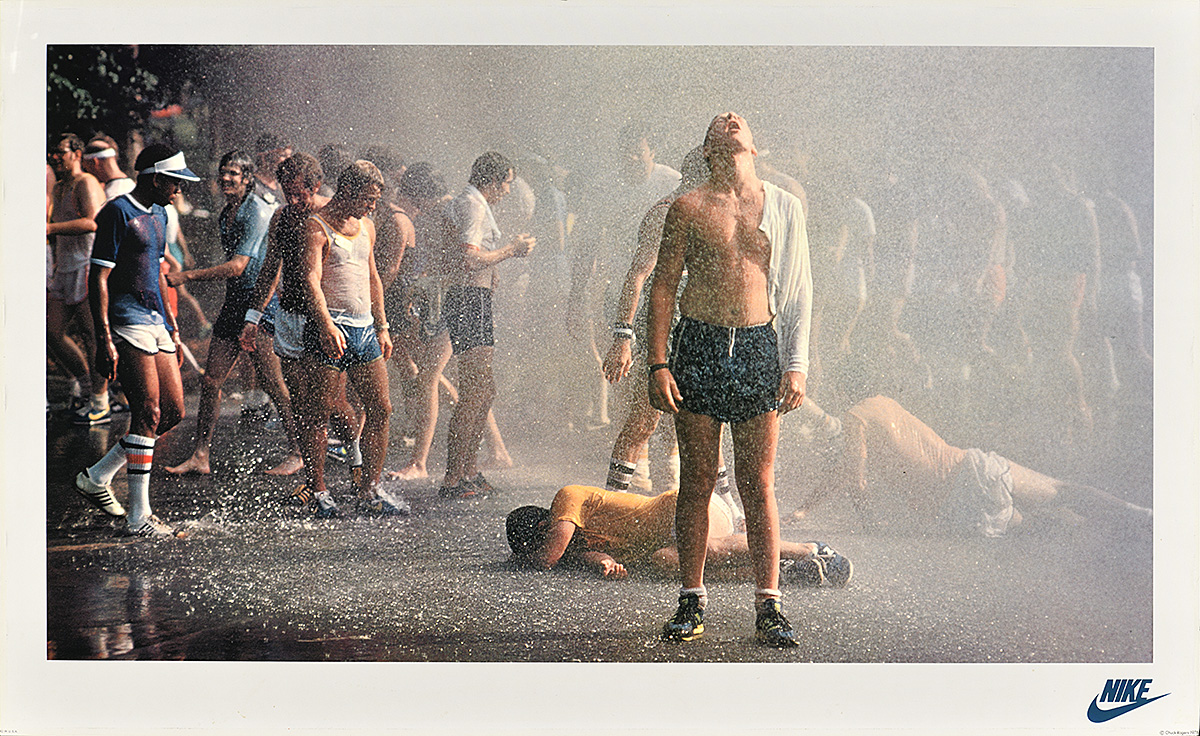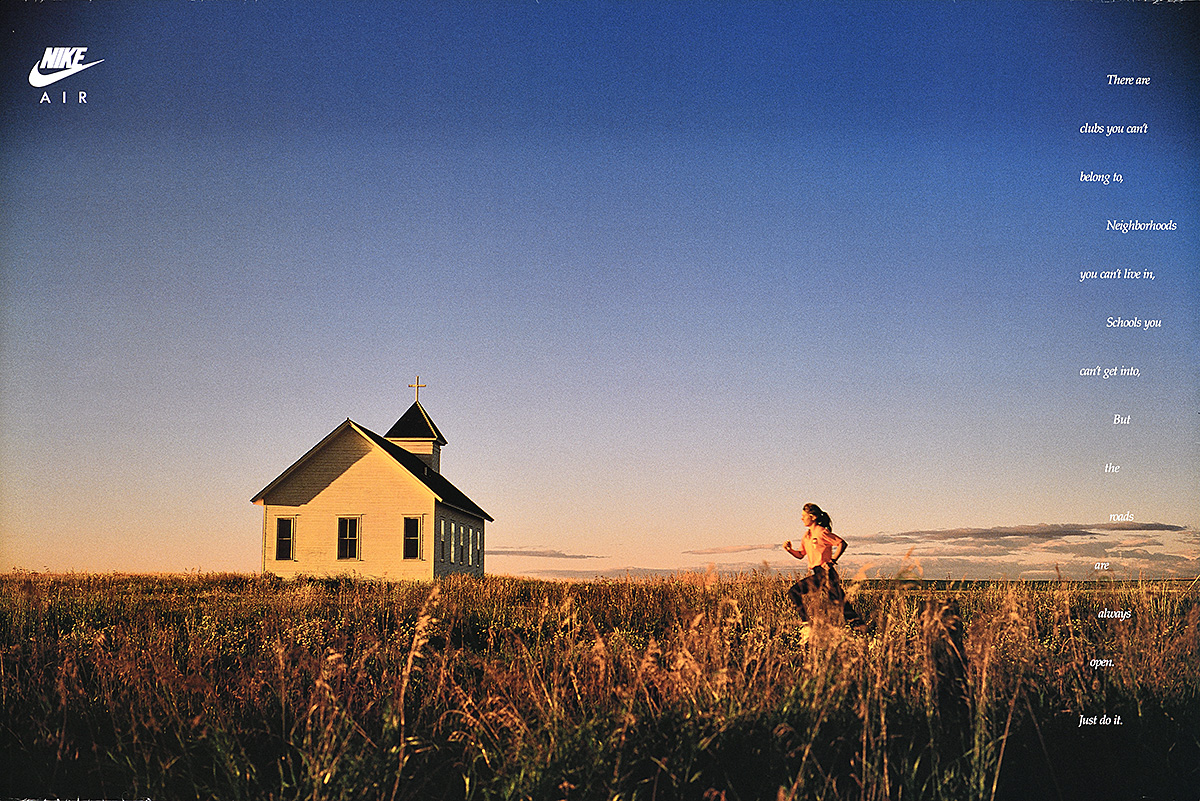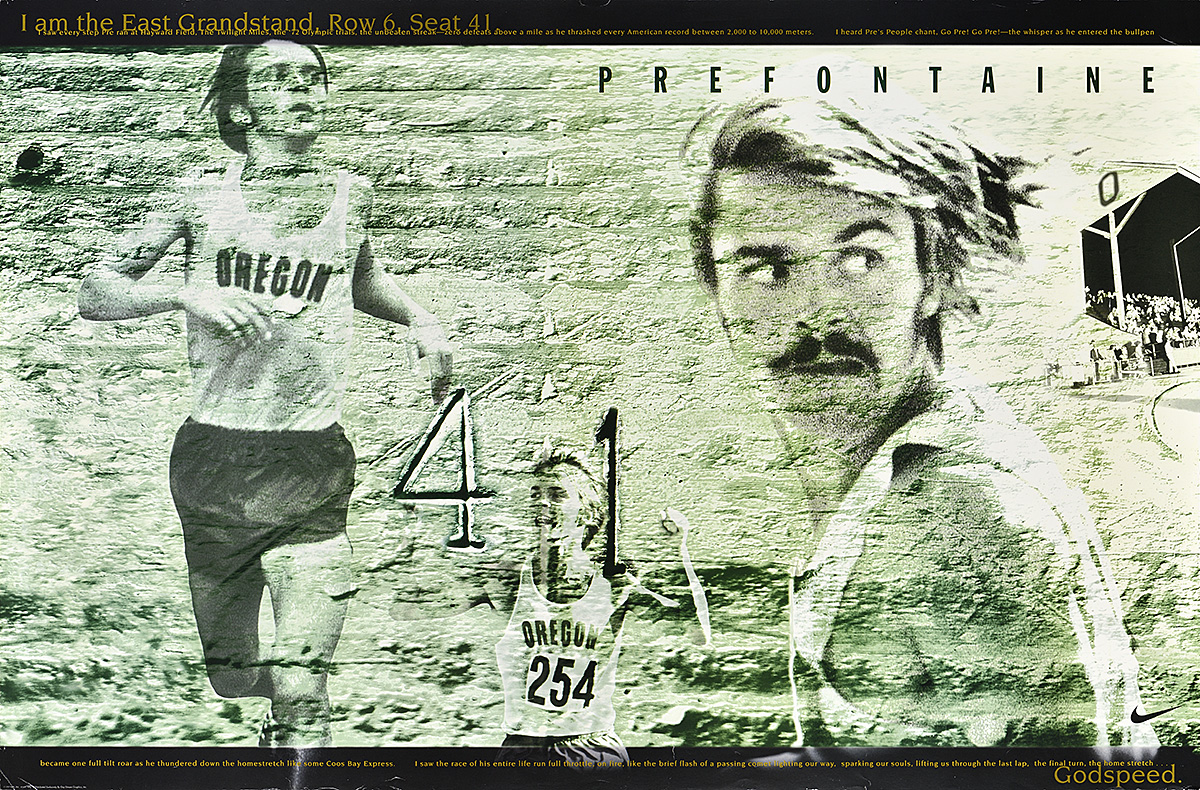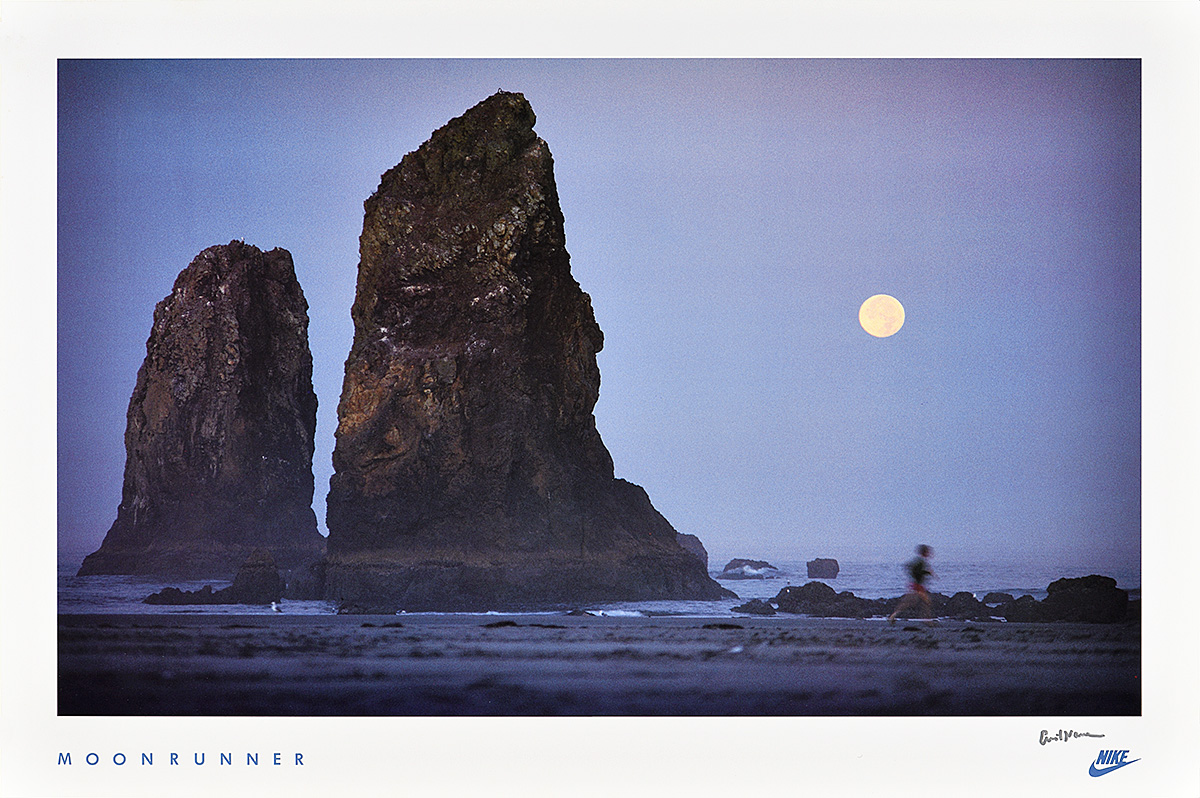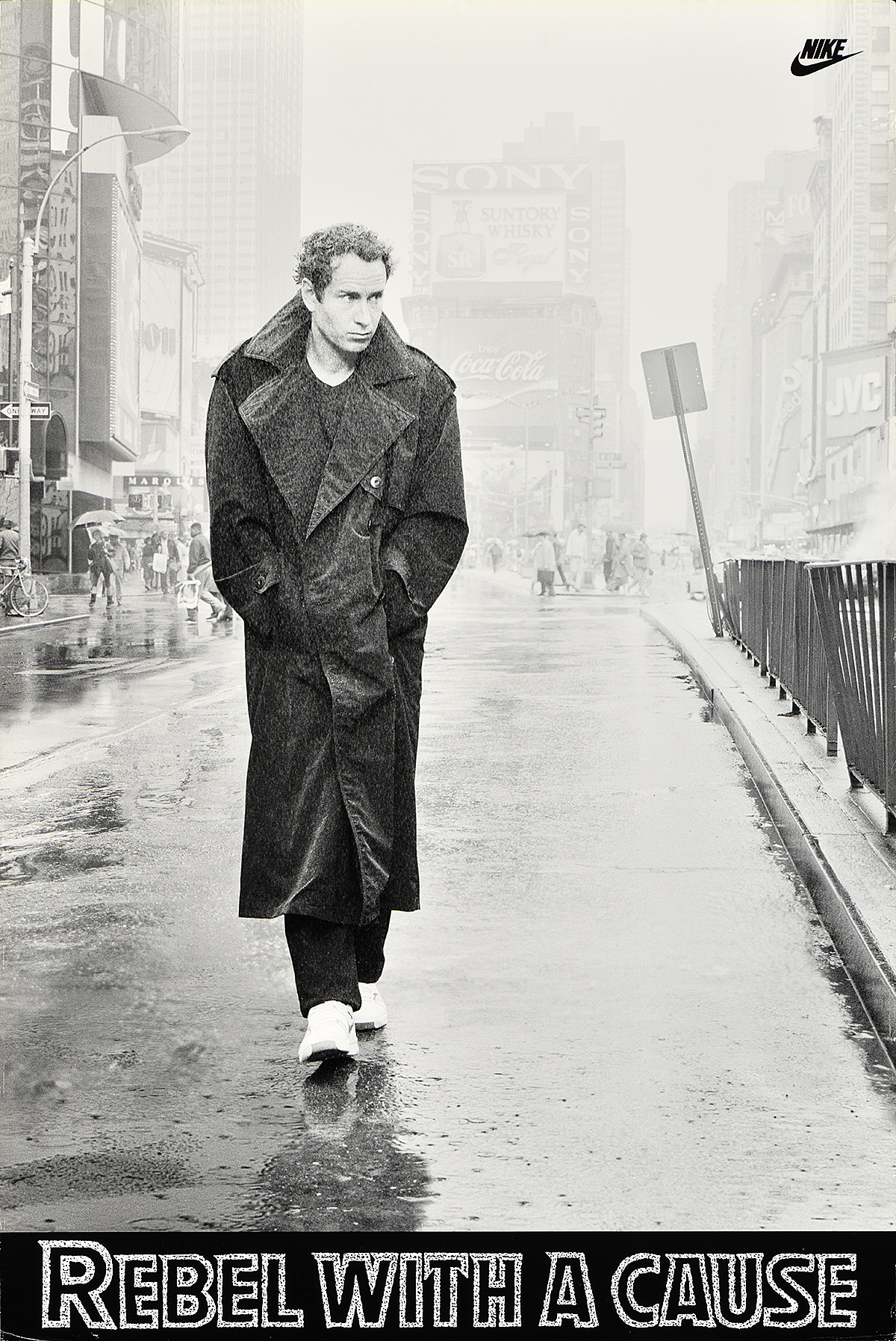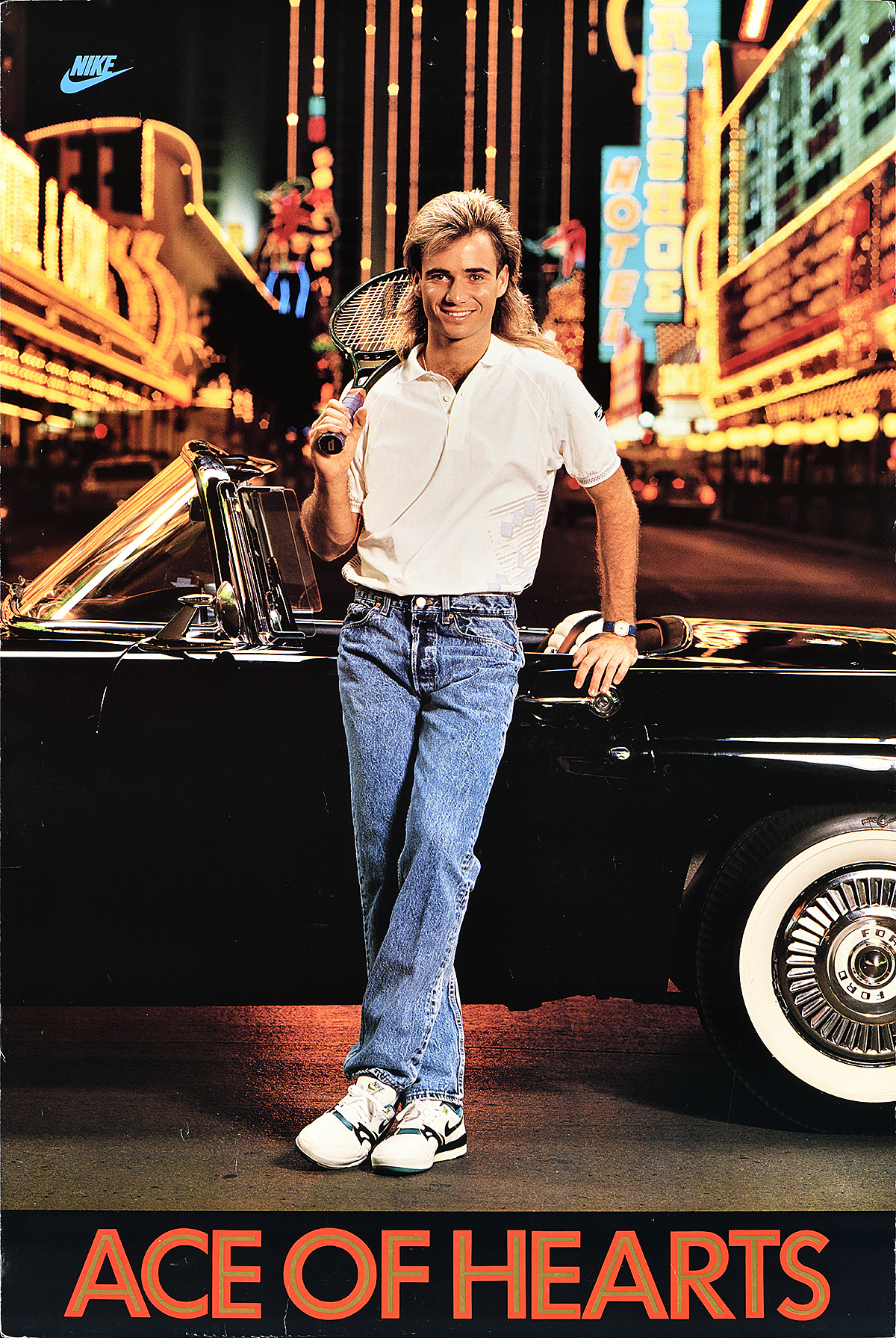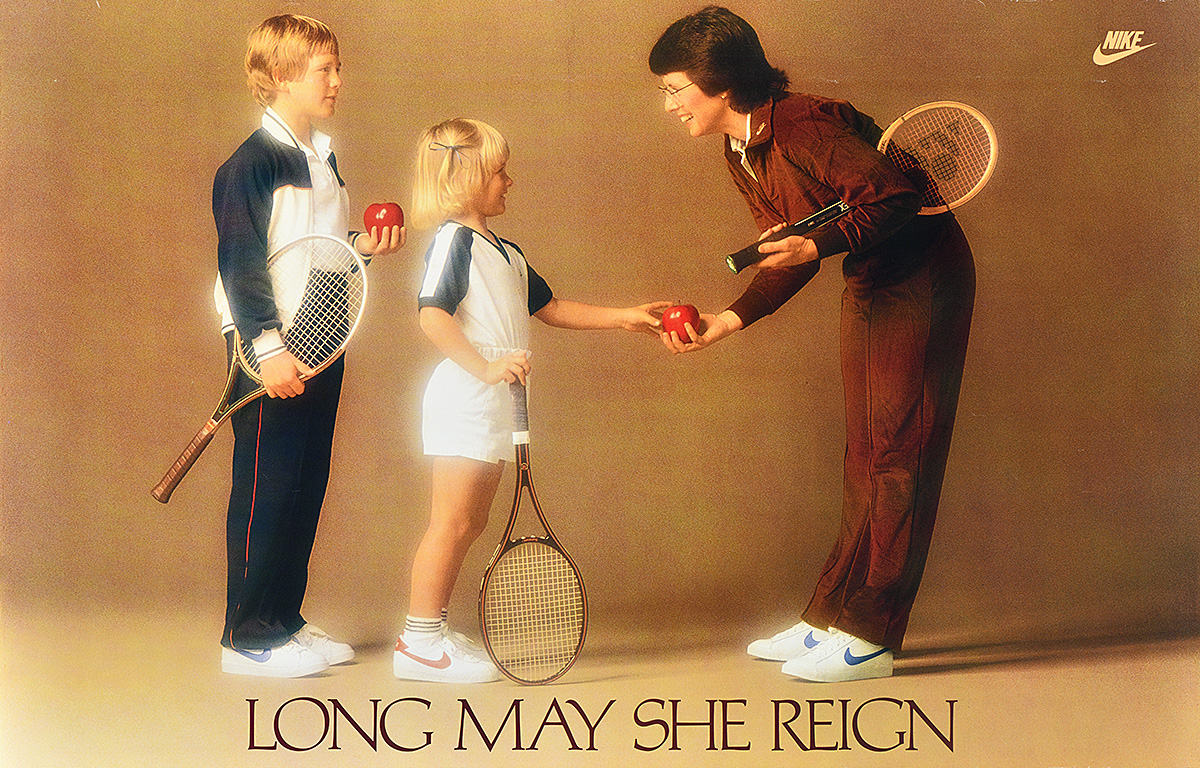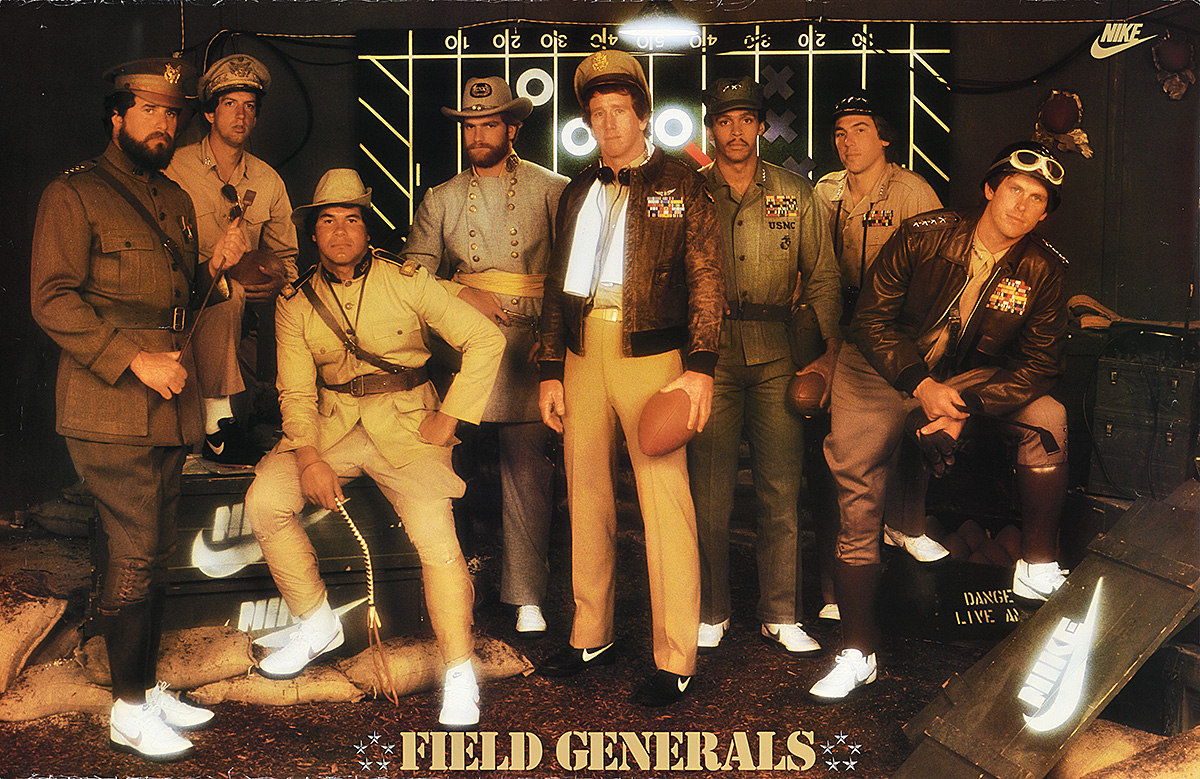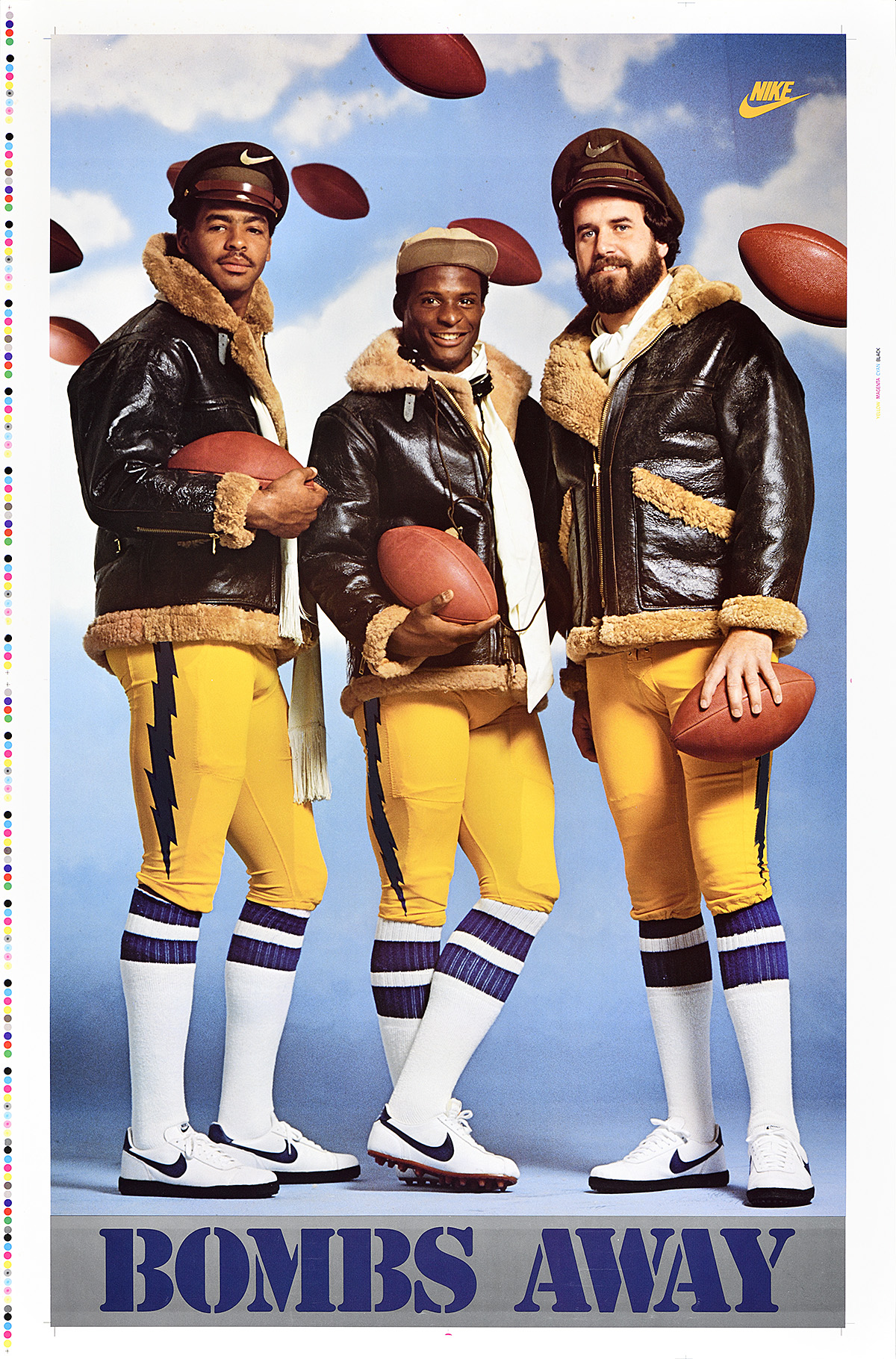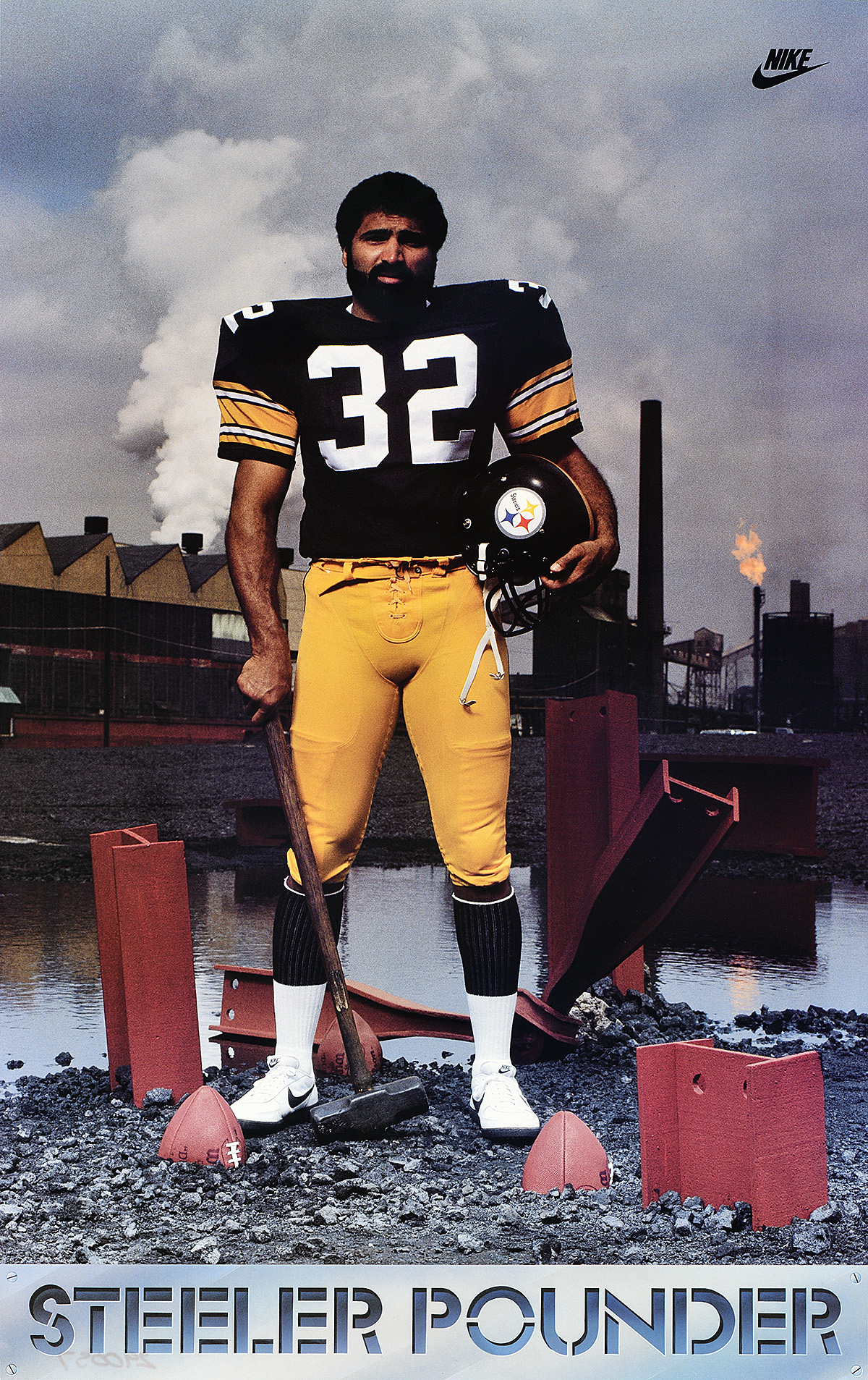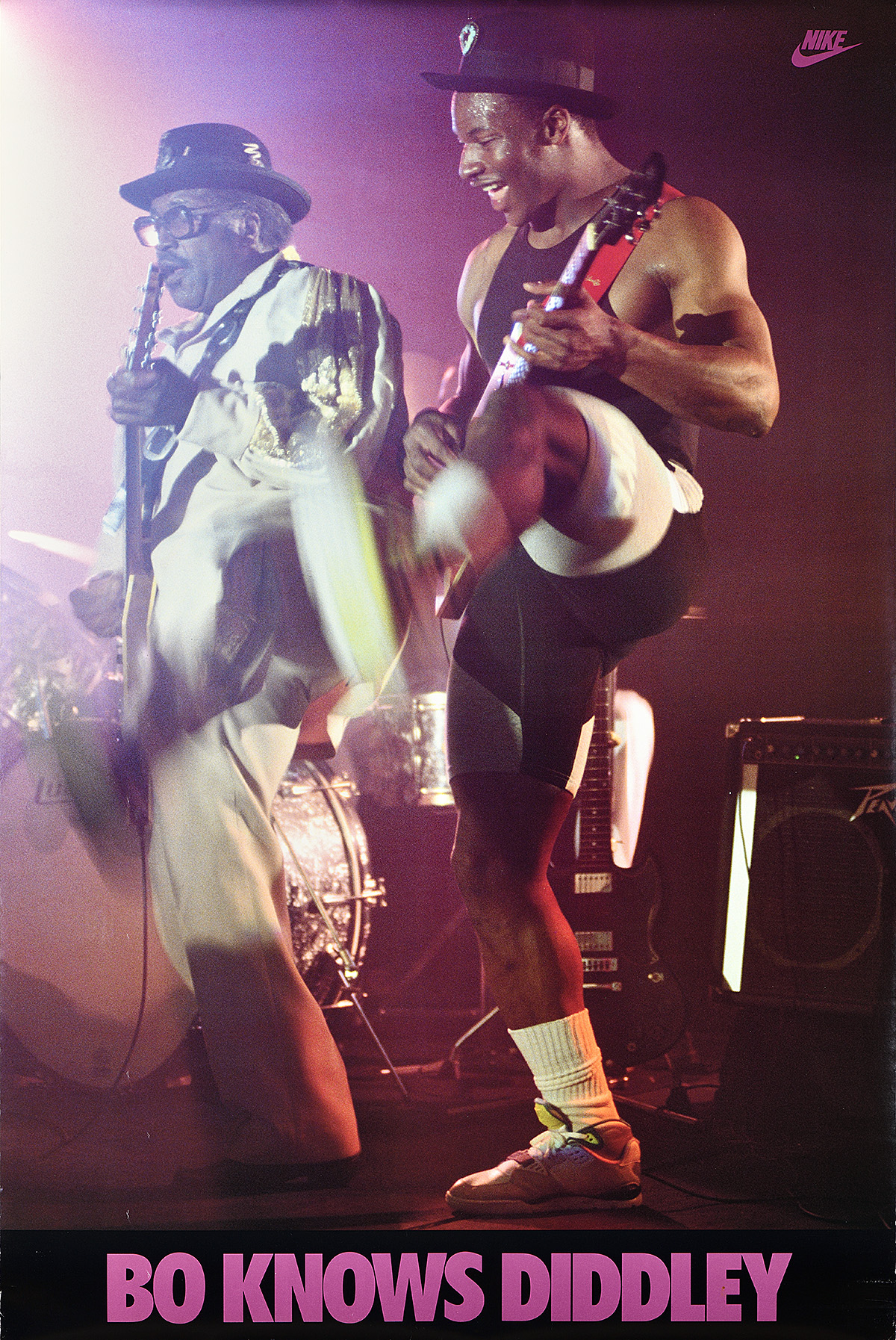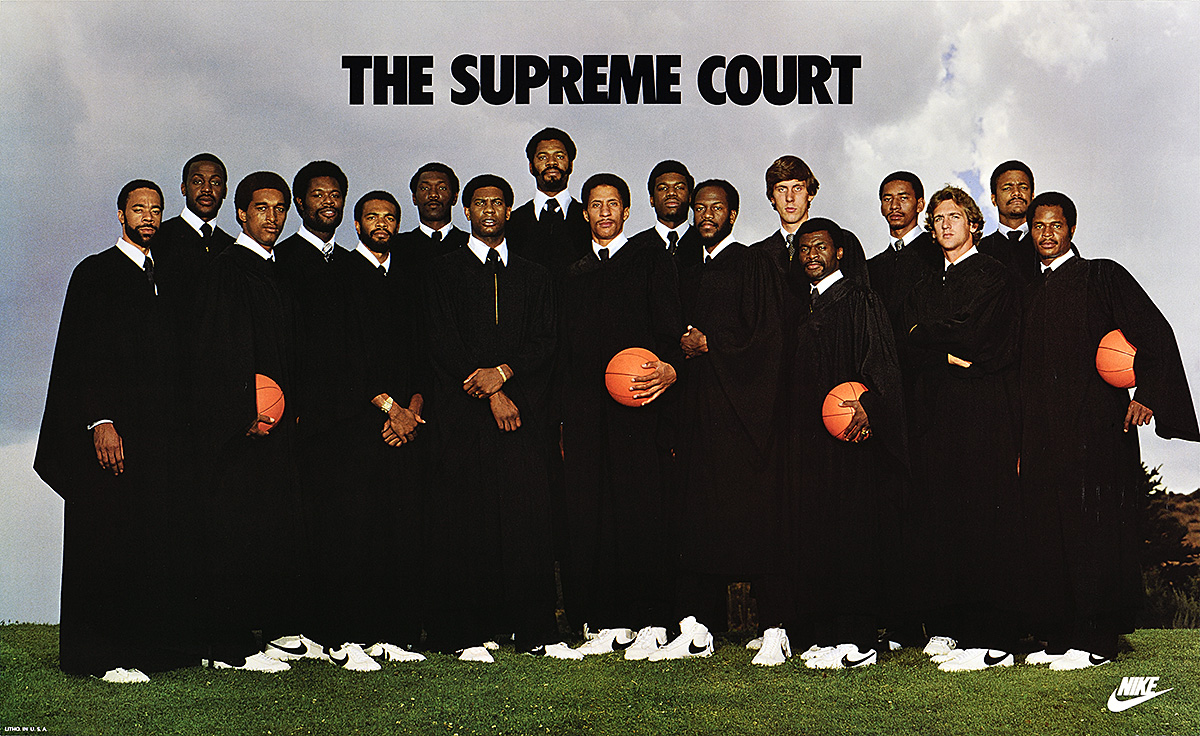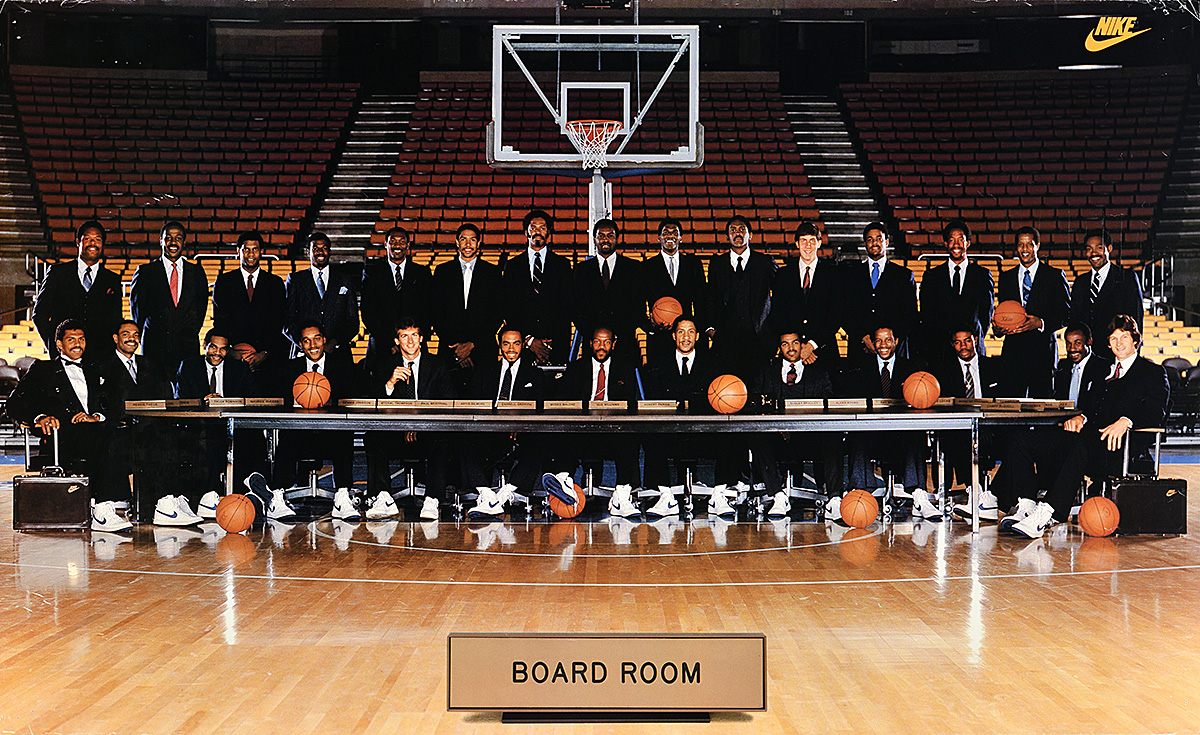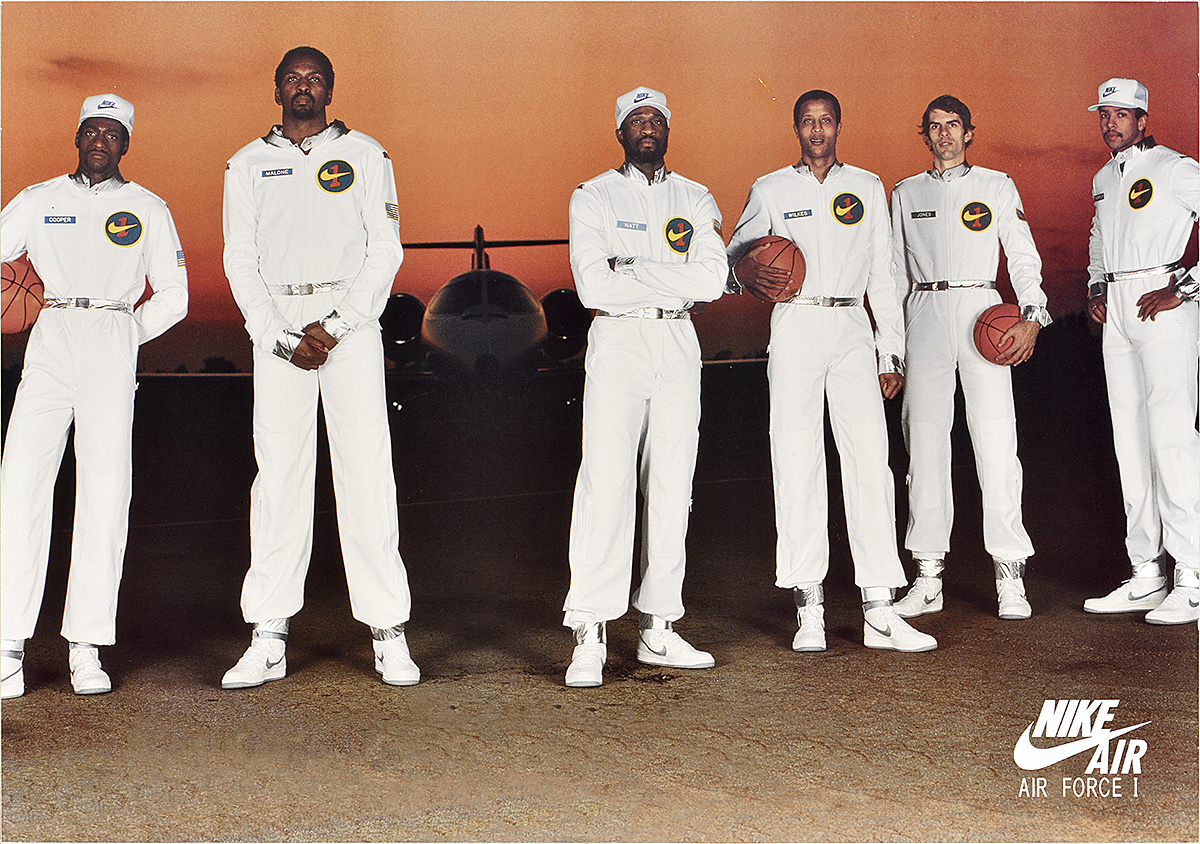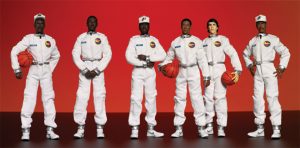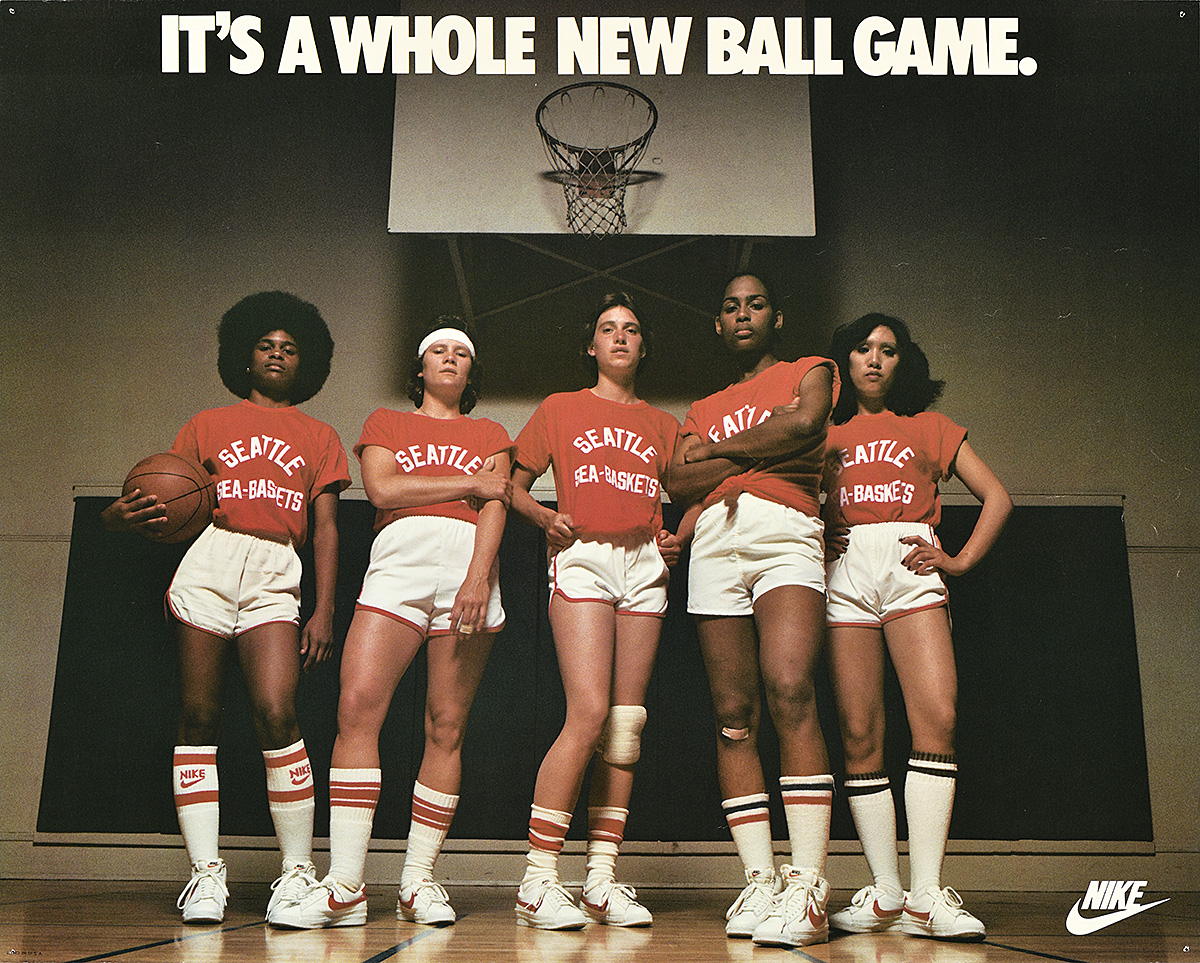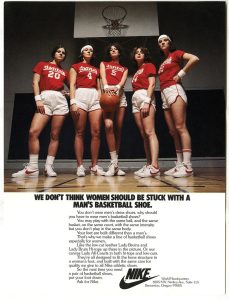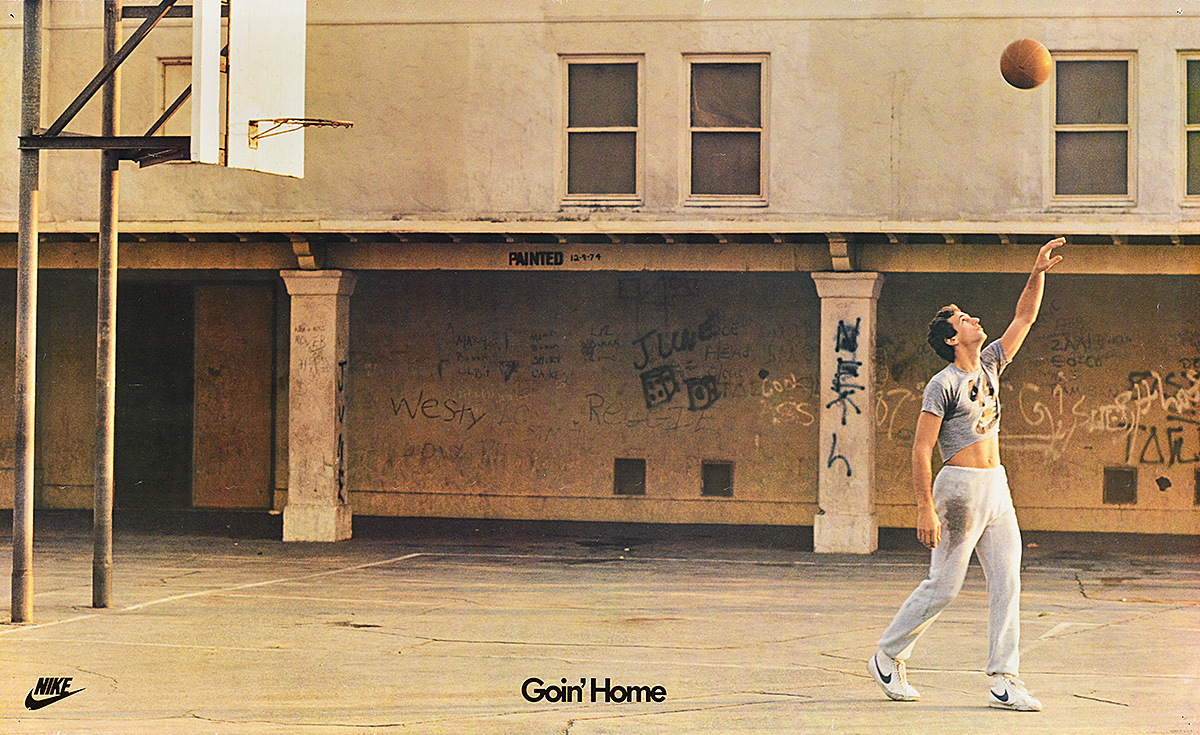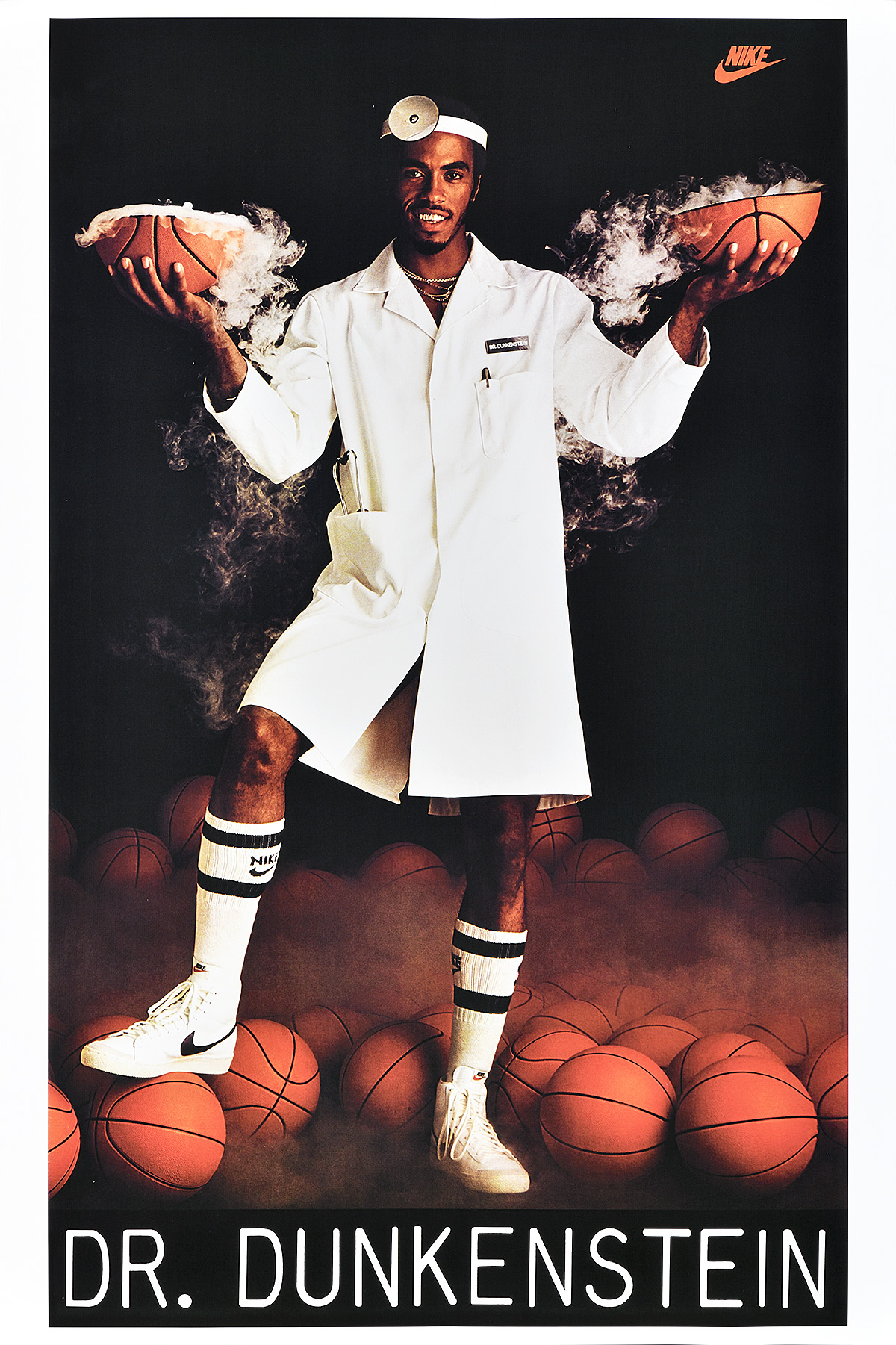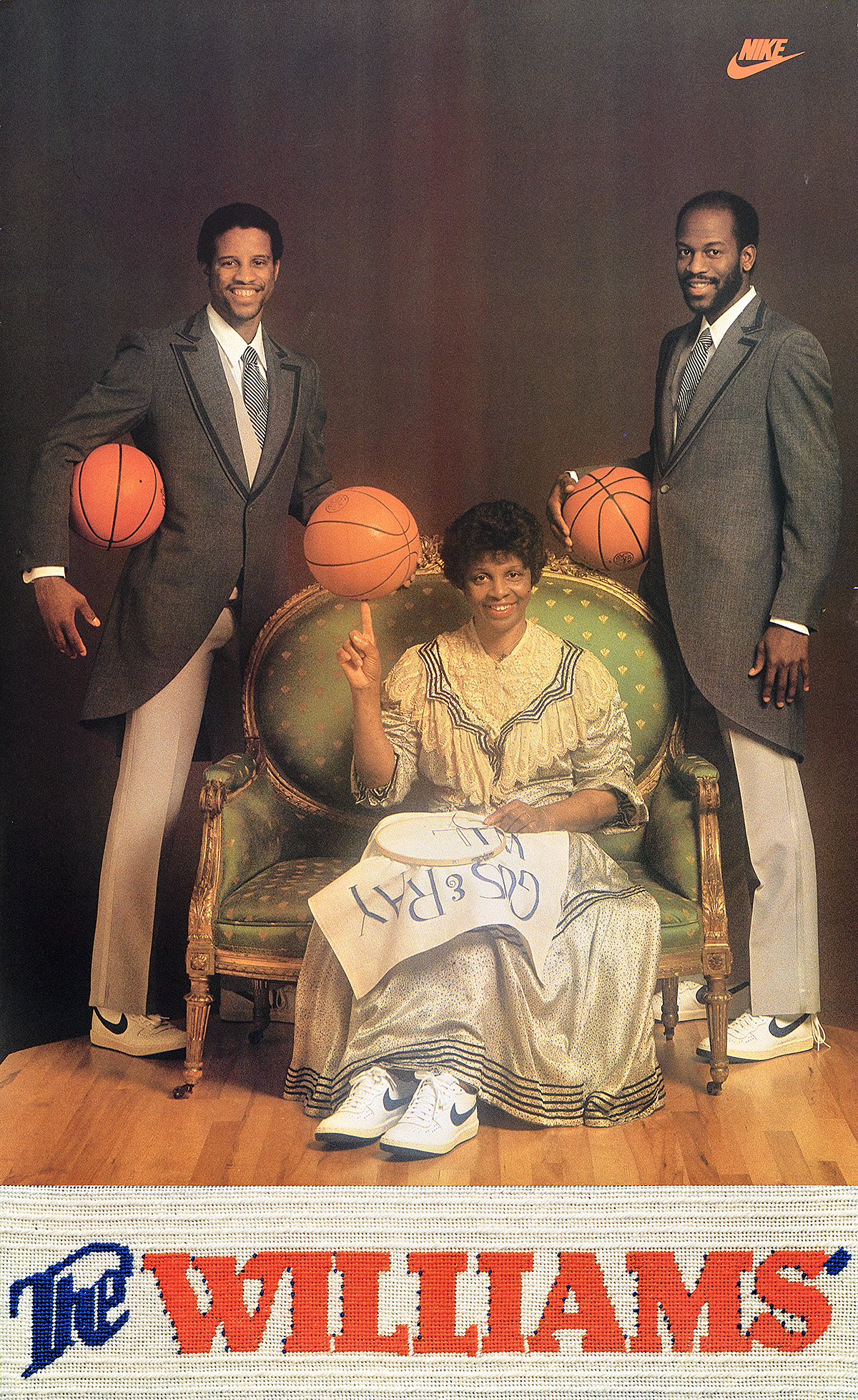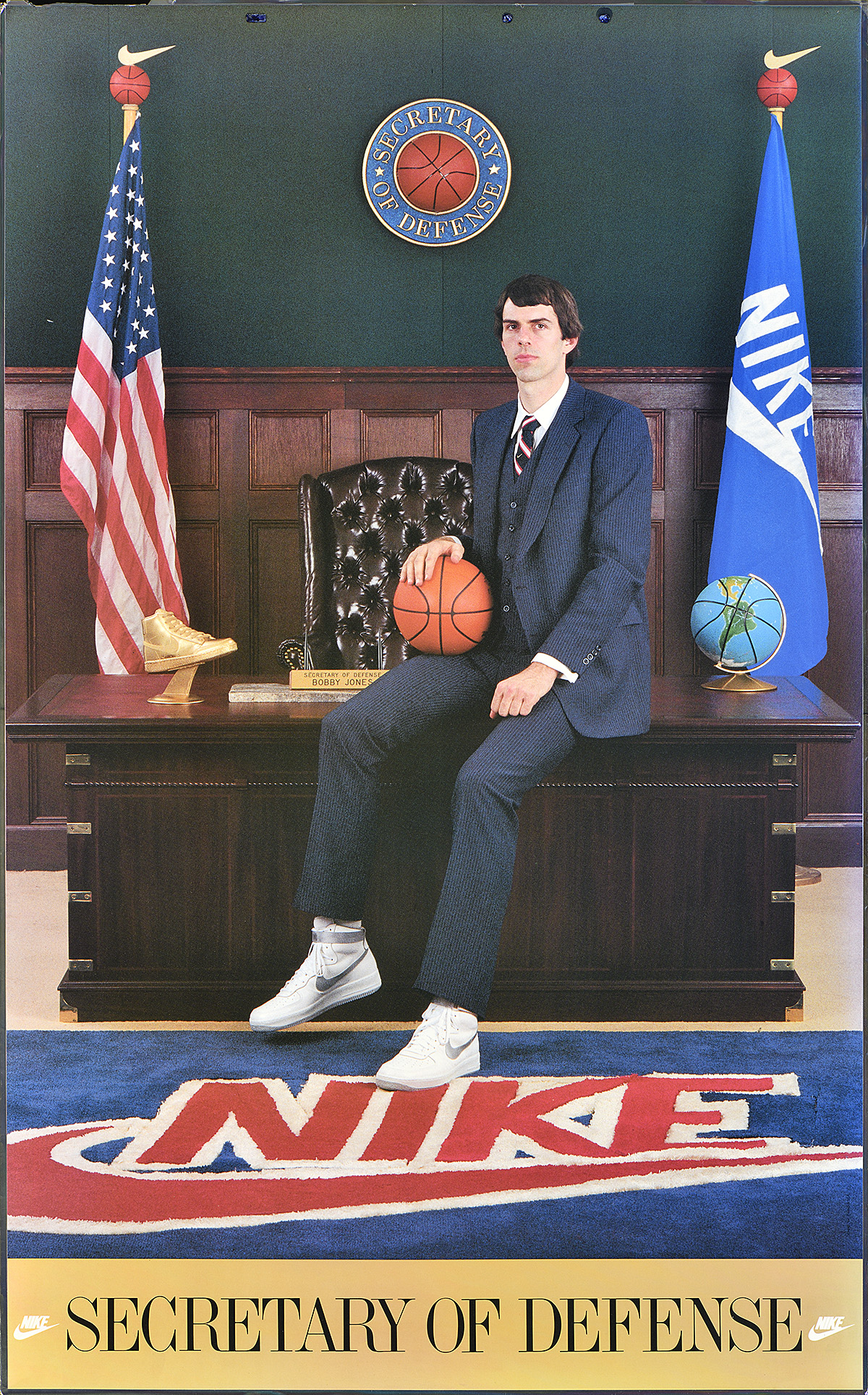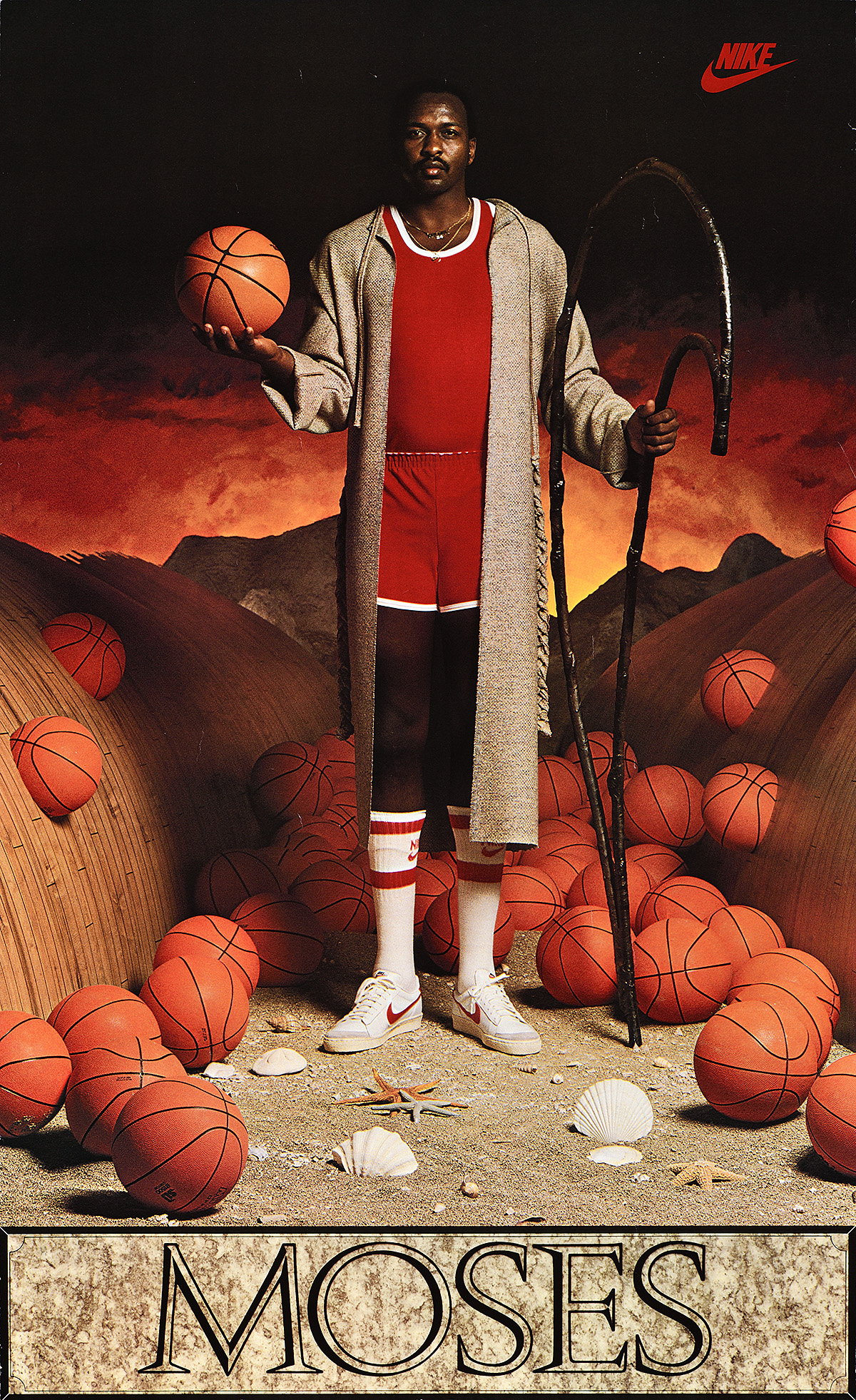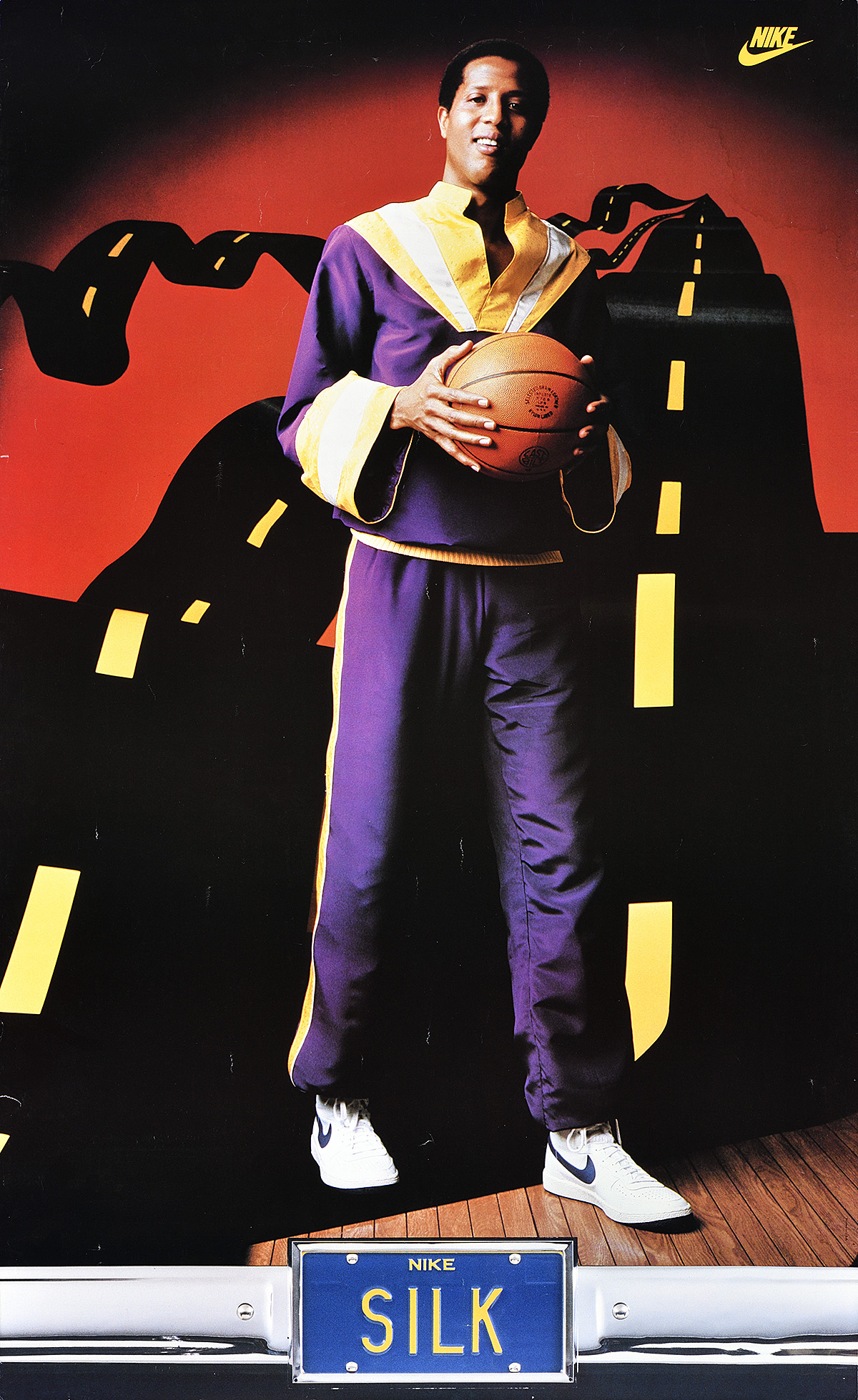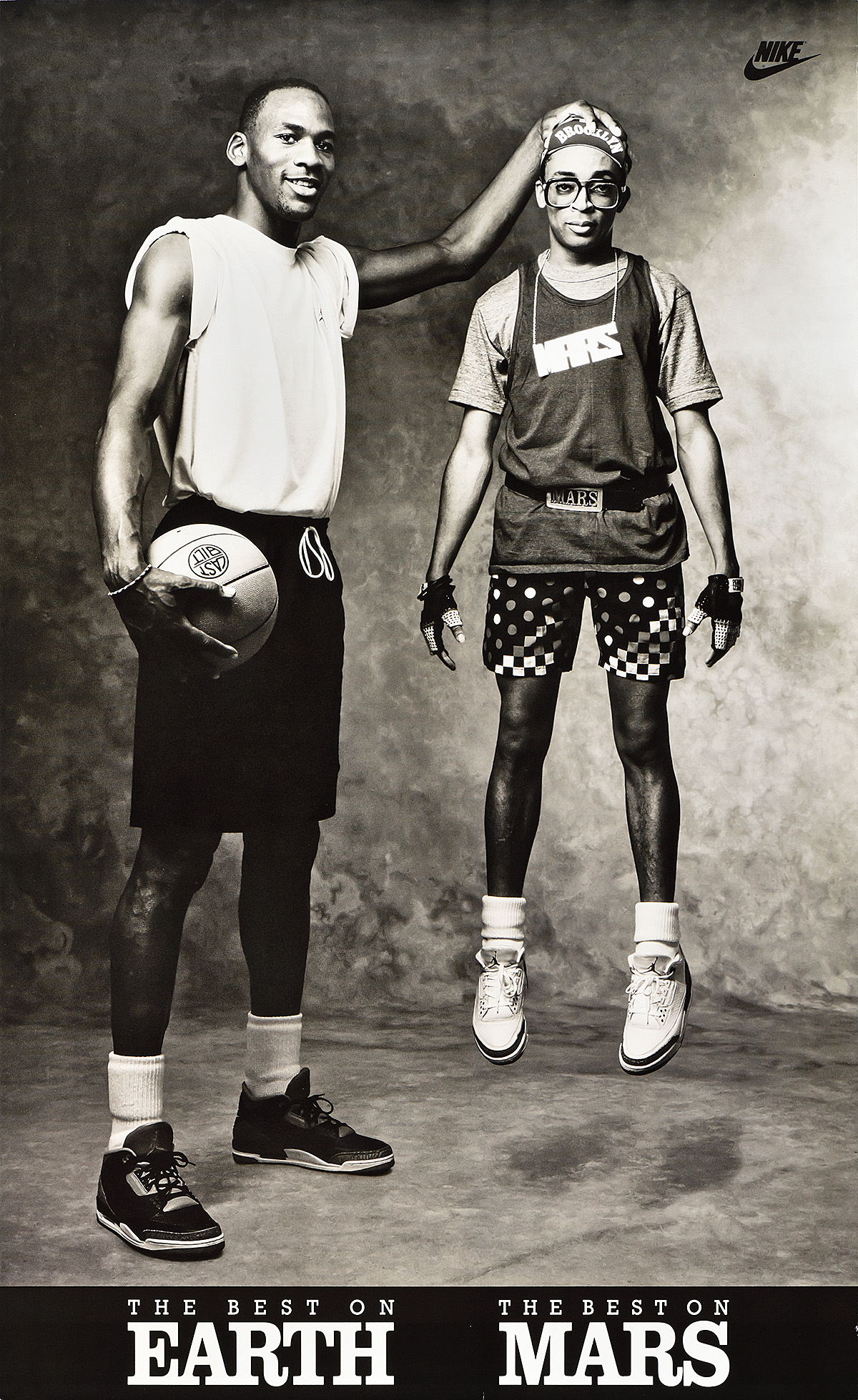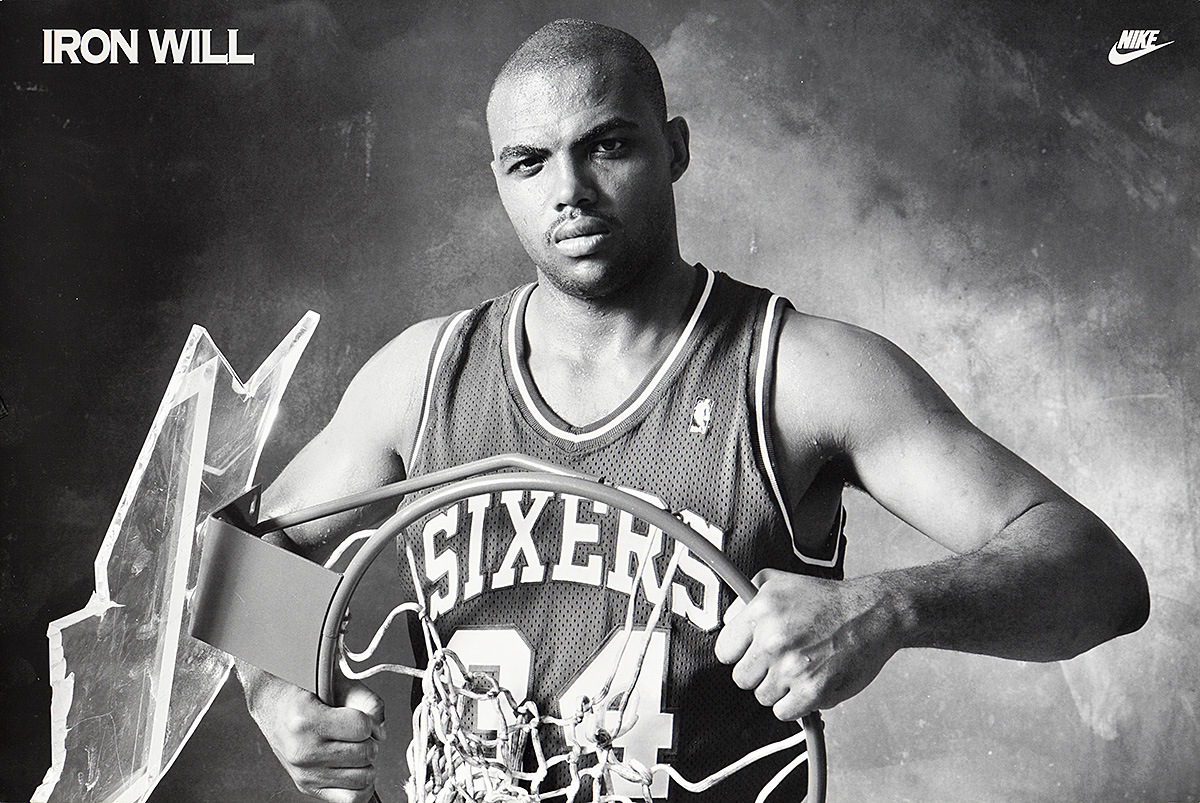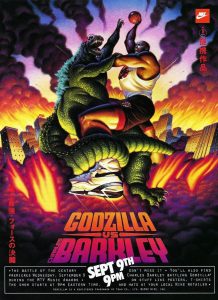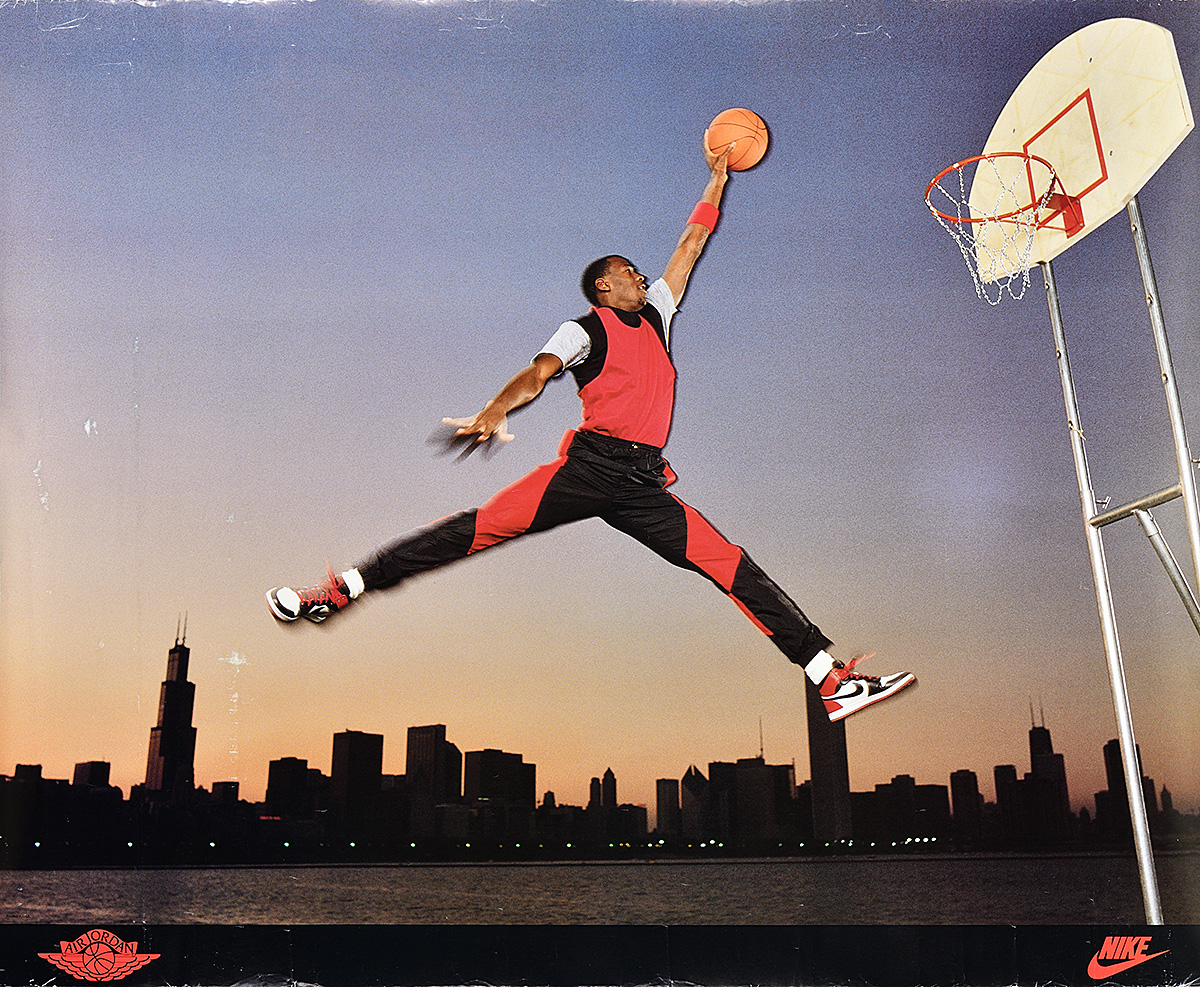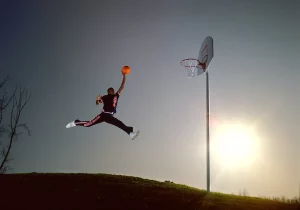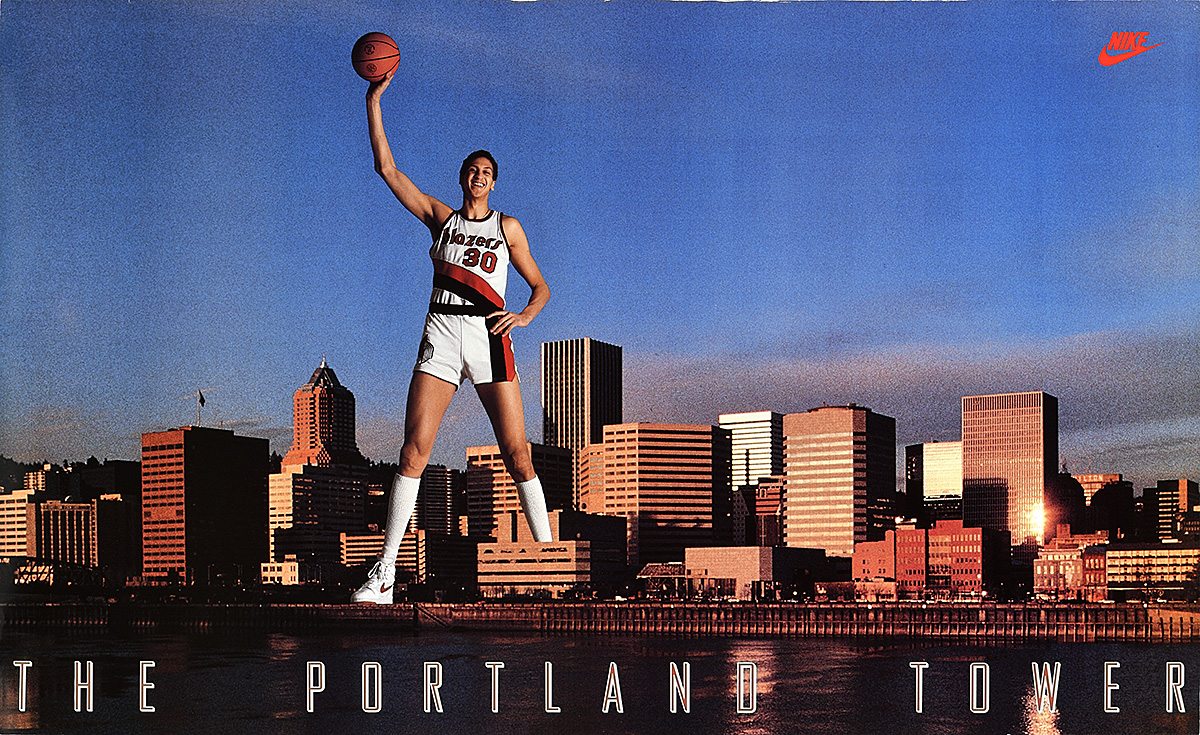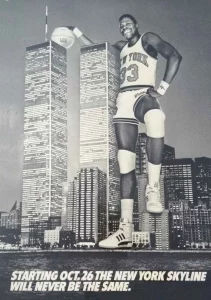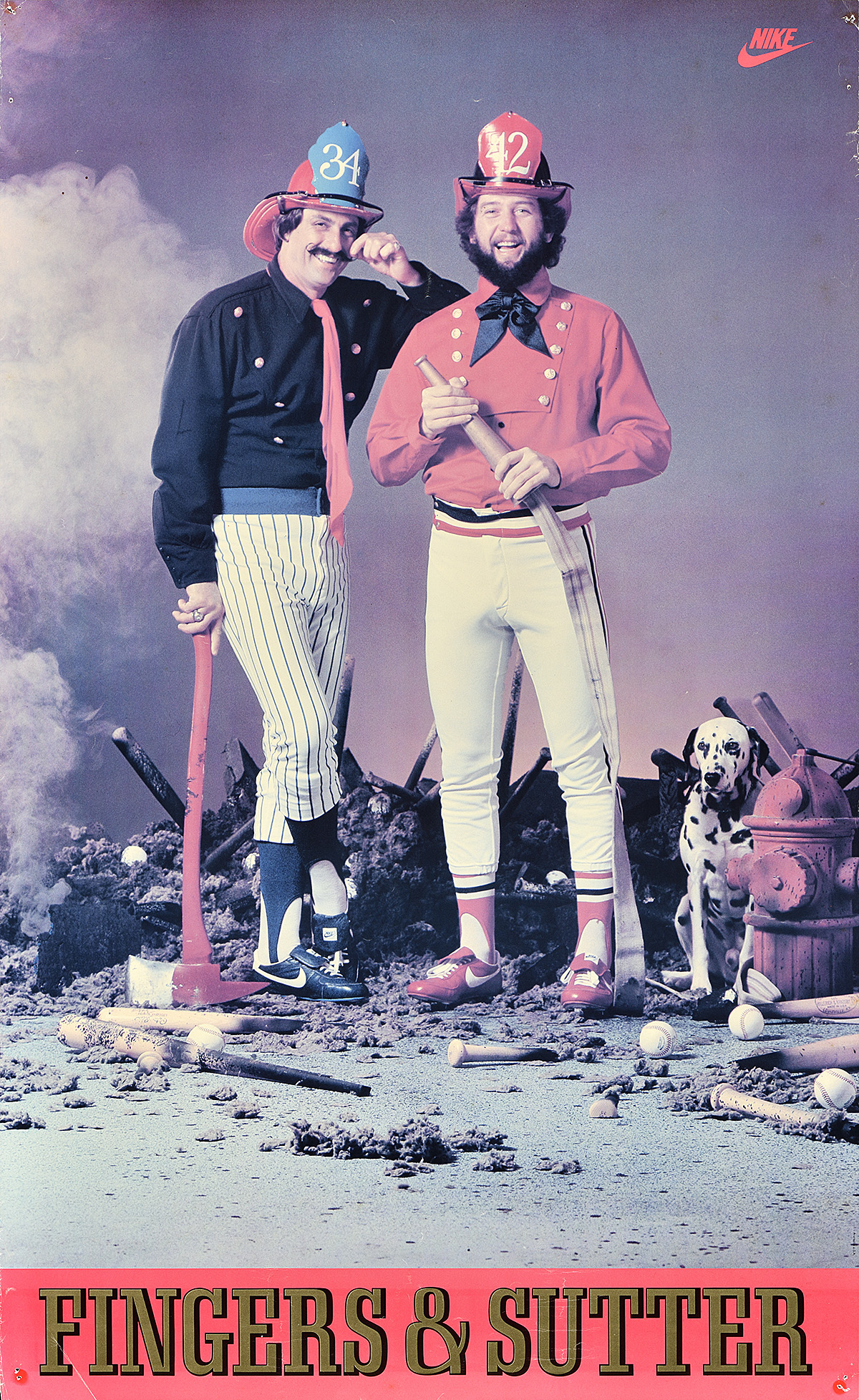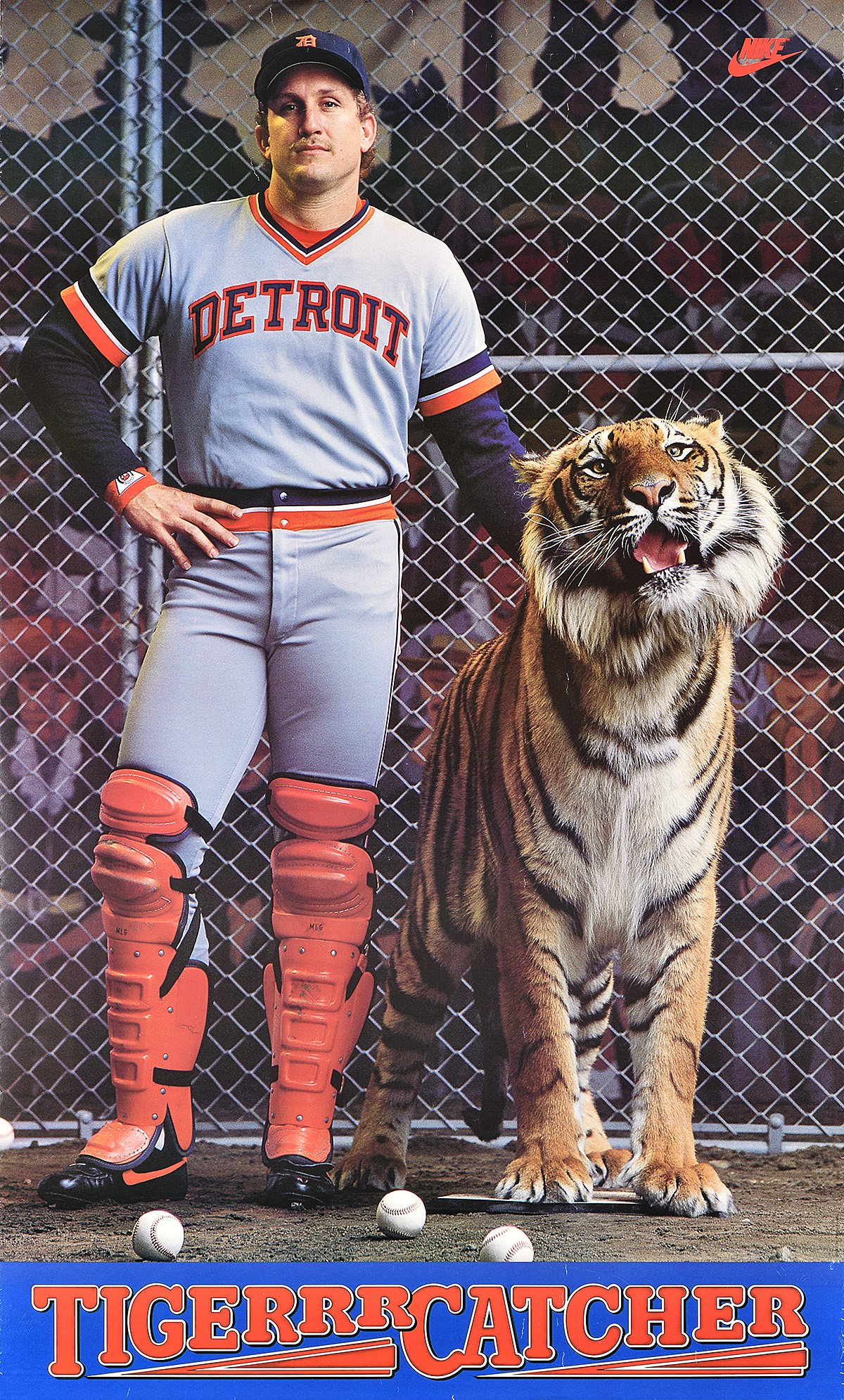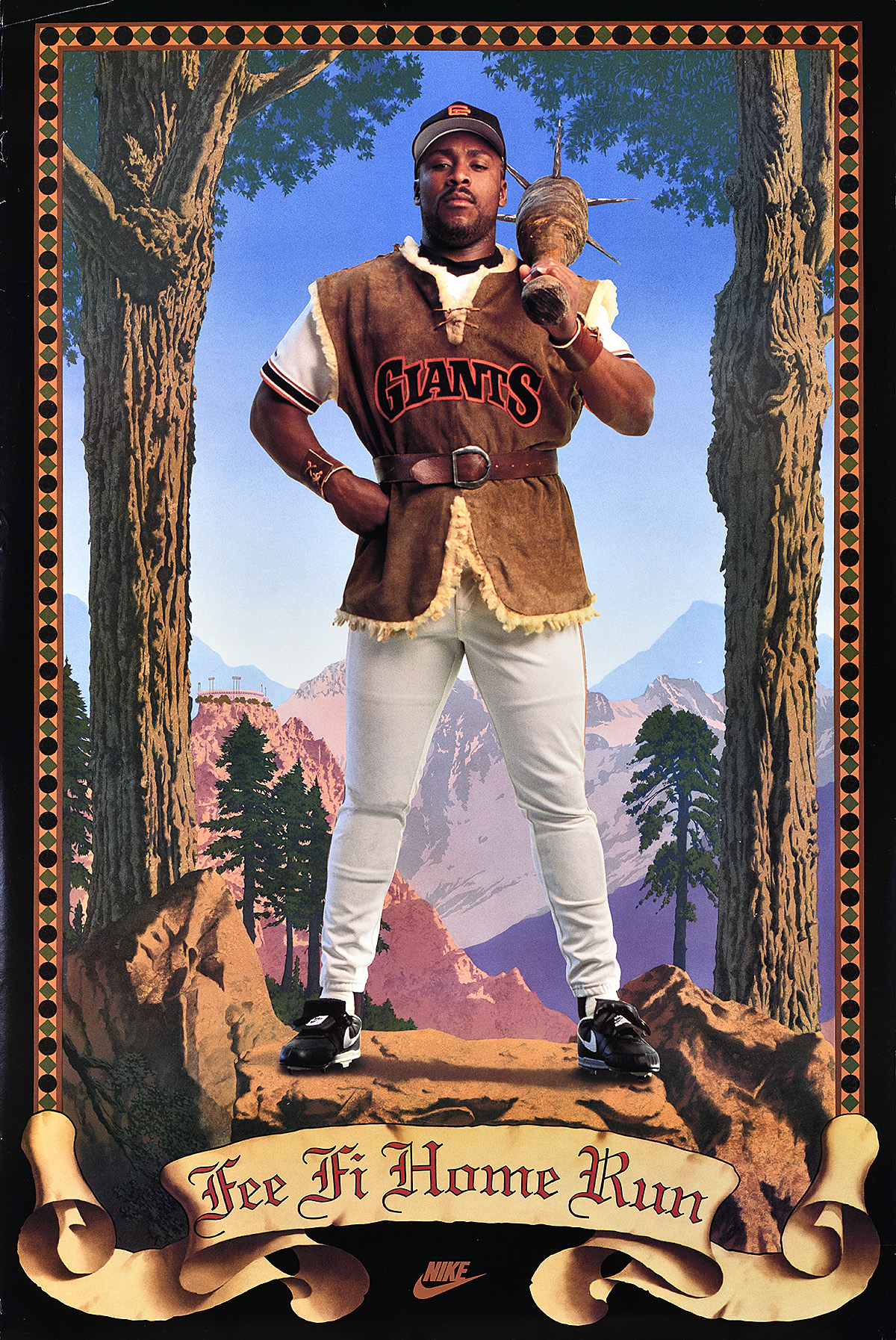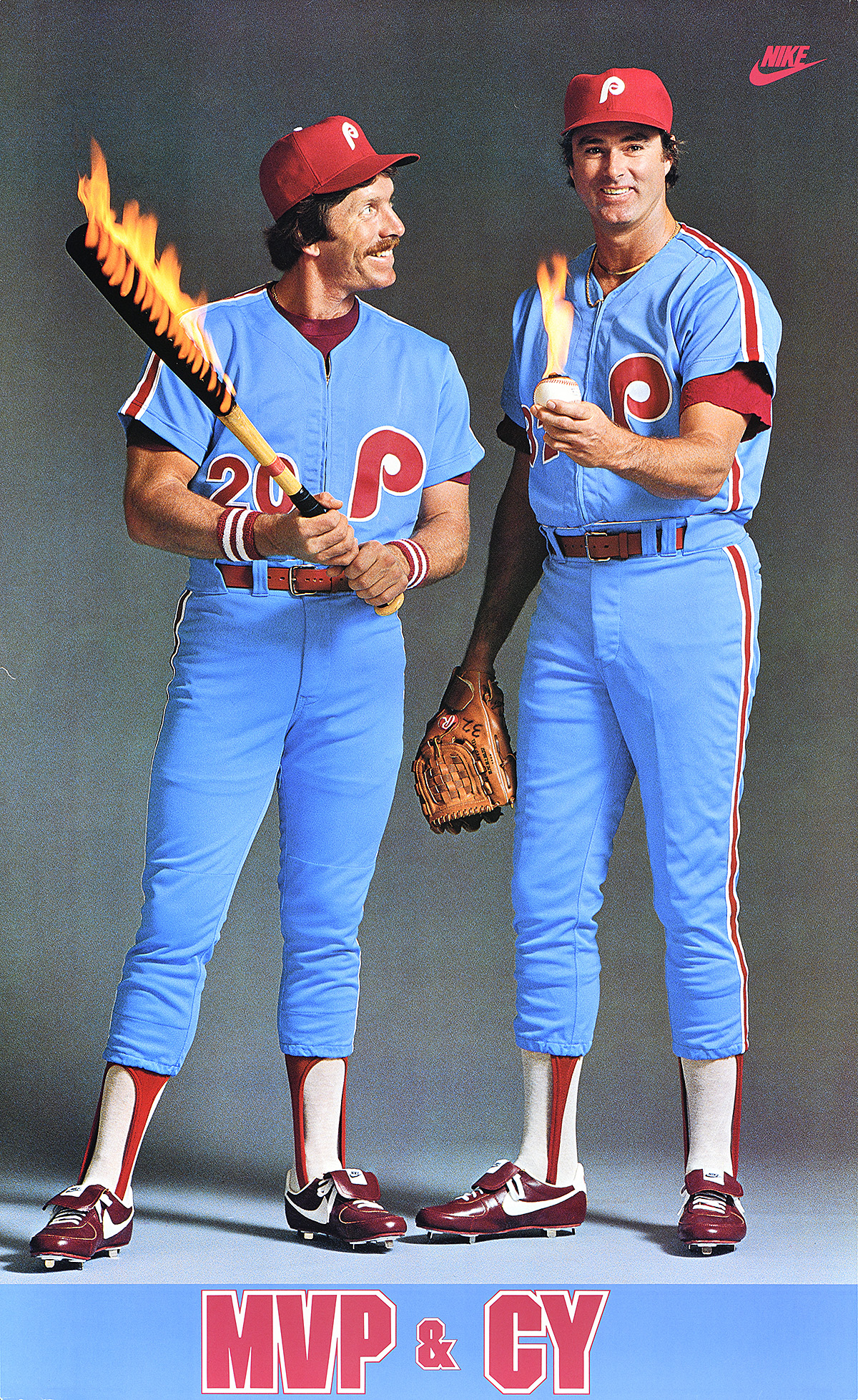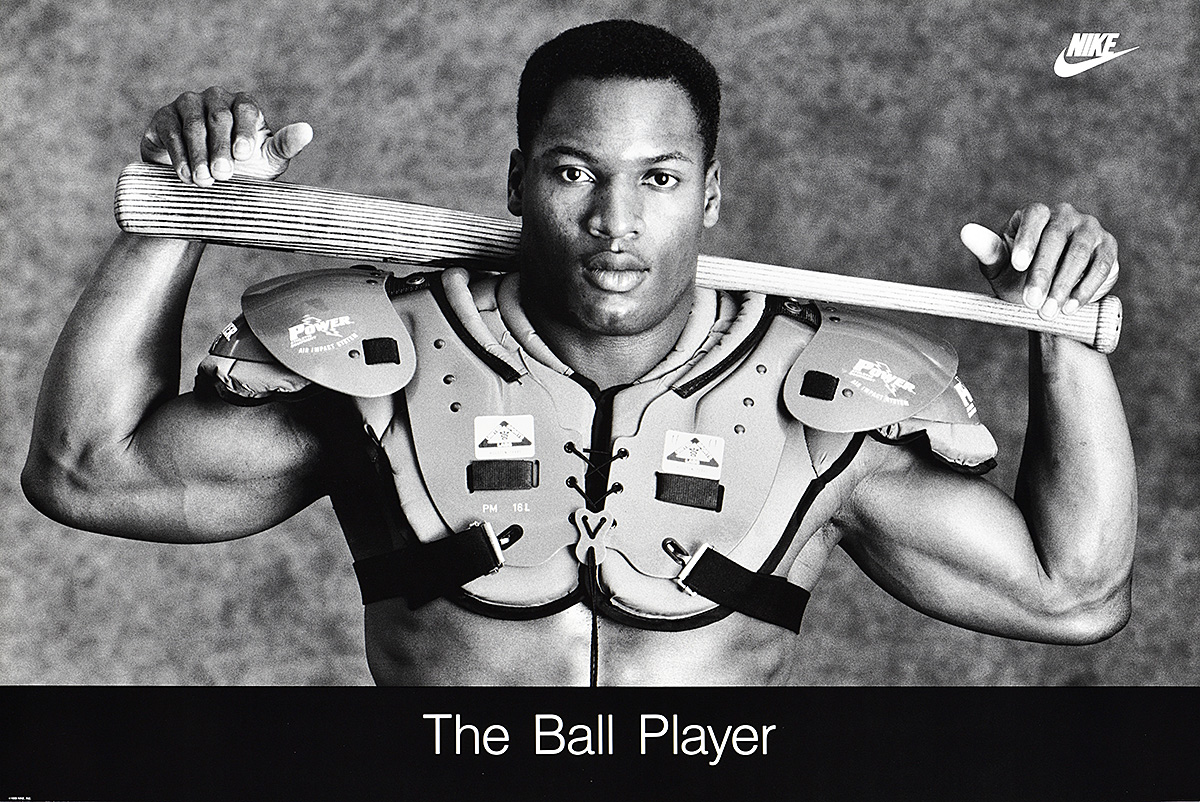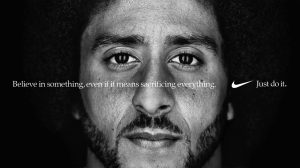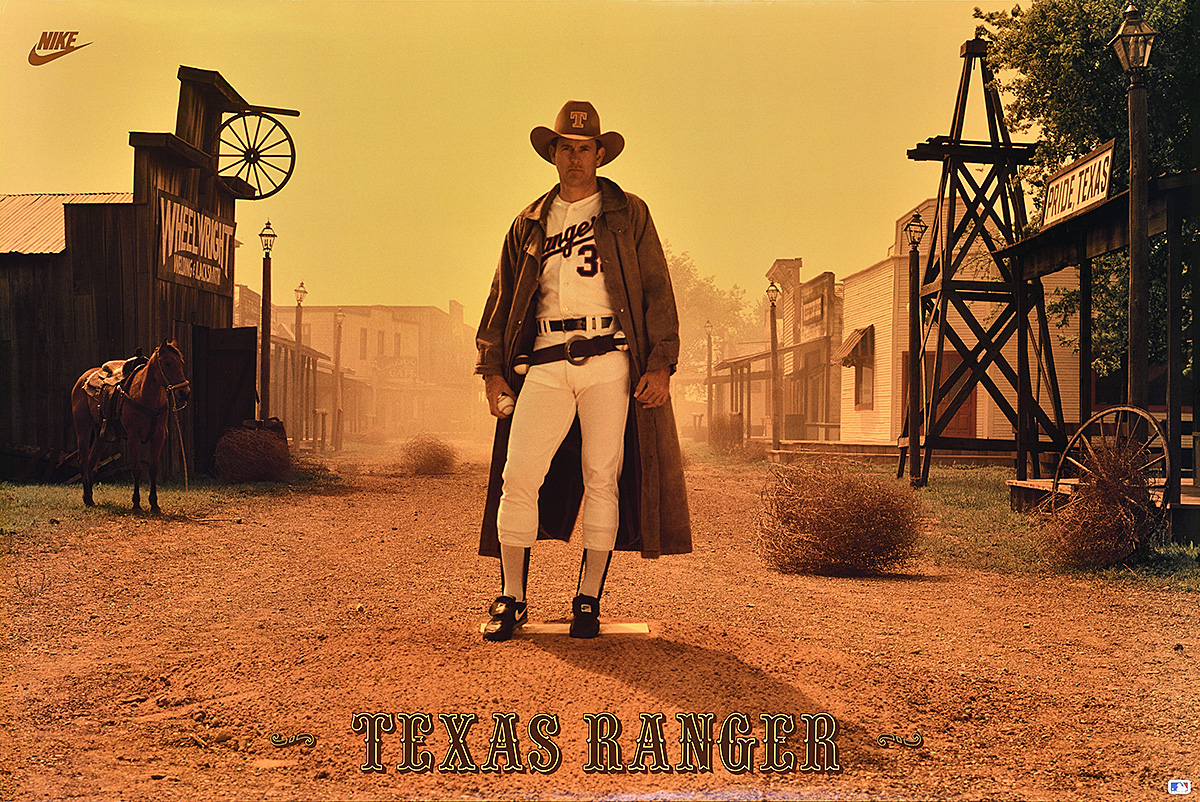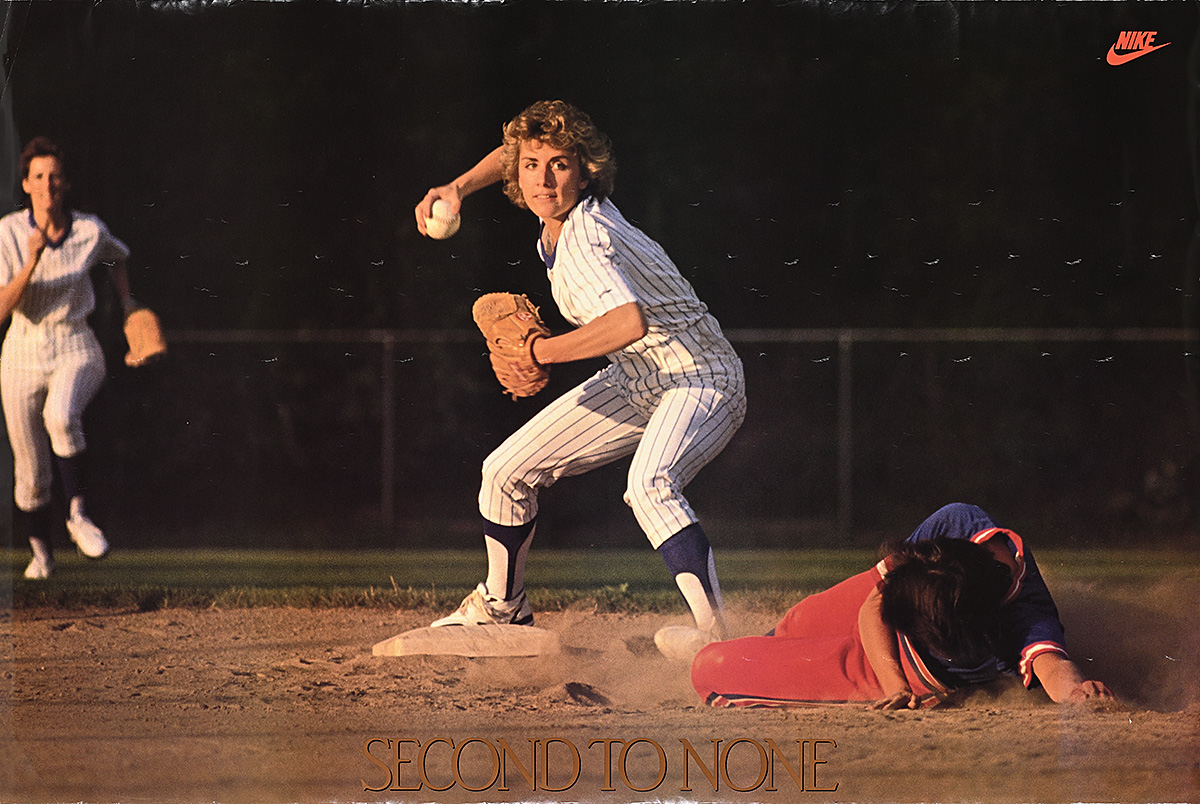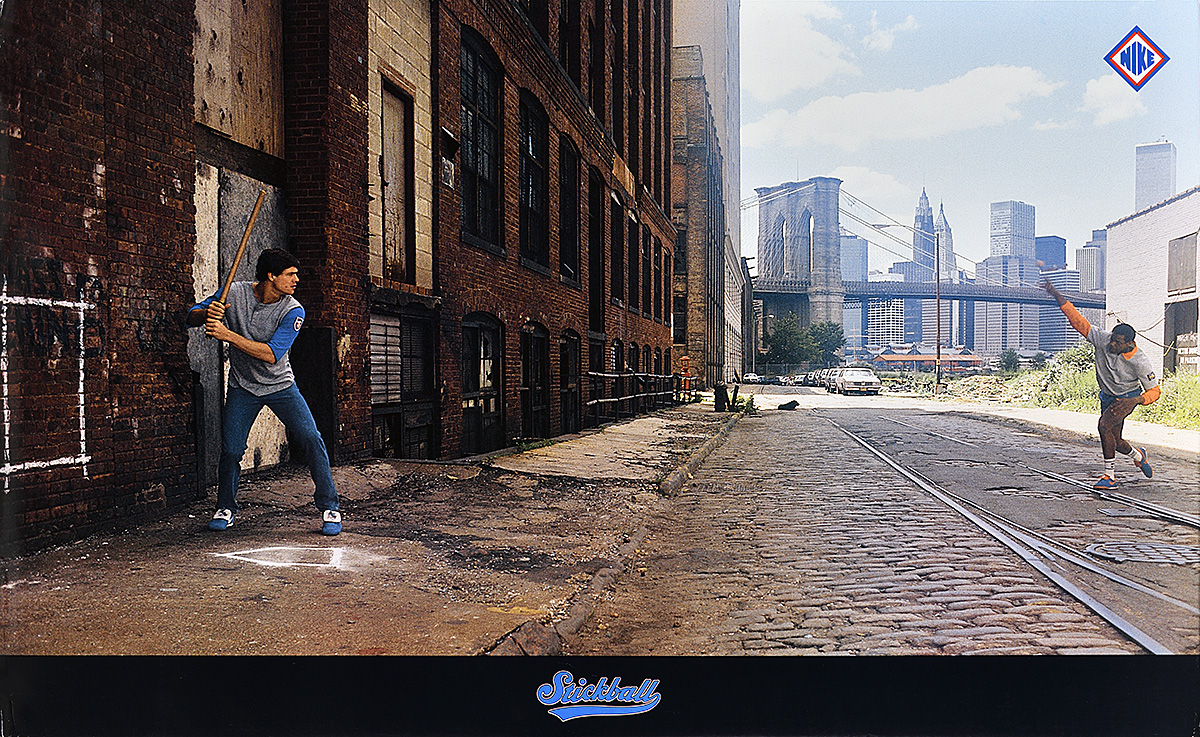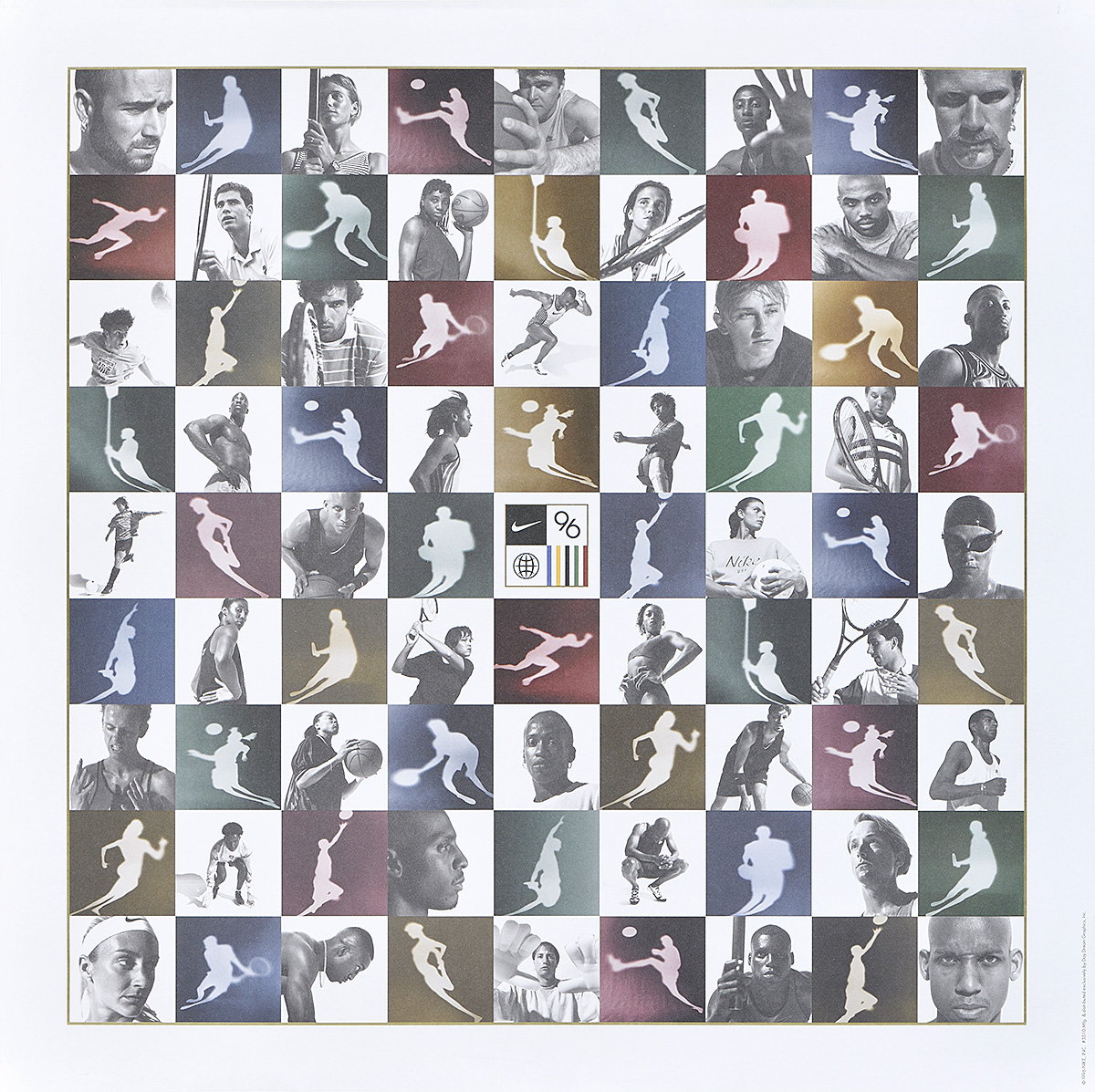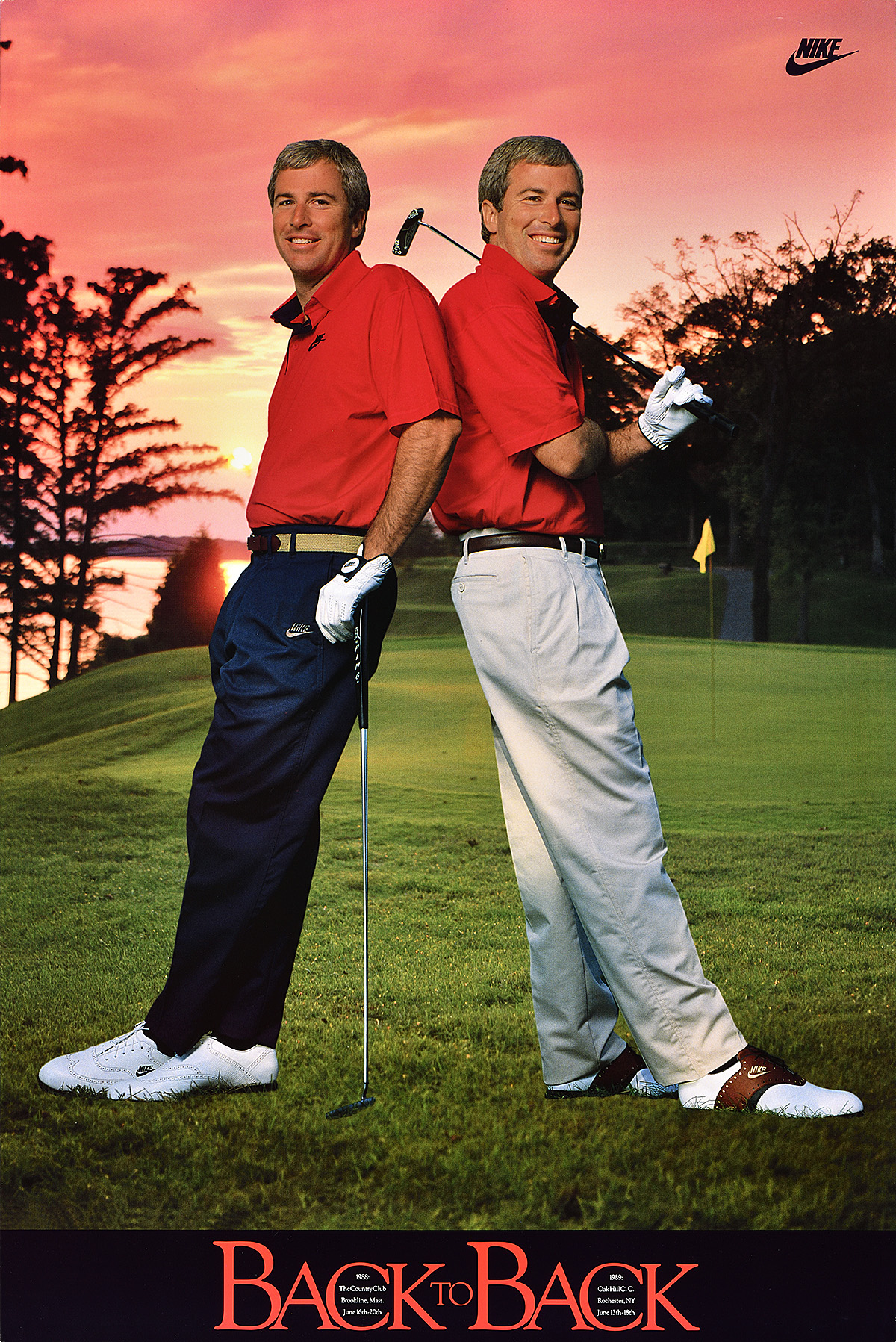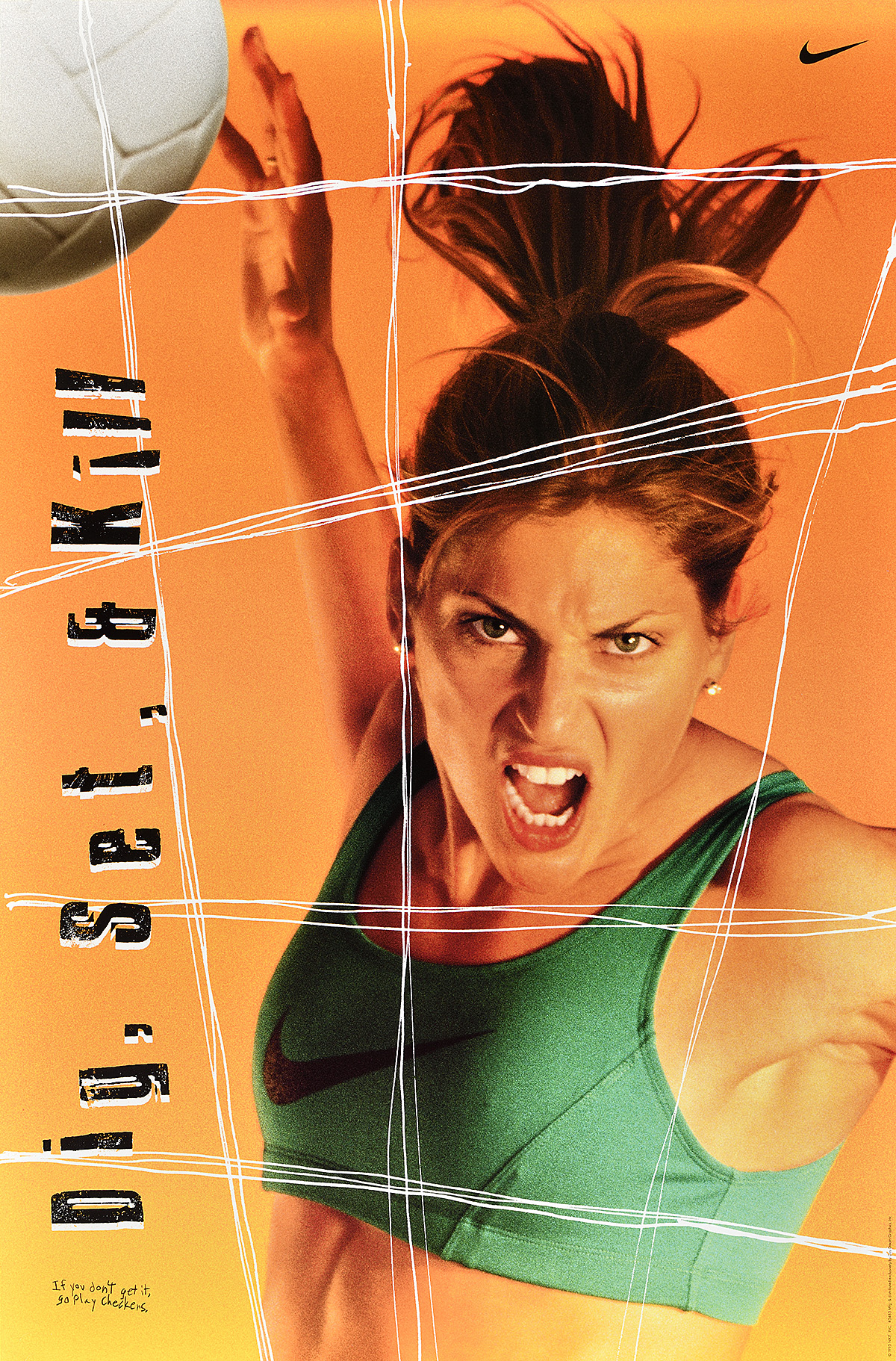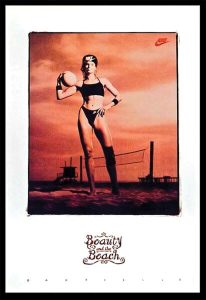Just Frame It: How Nike Turned Sports Stars into Superheroes
In the 1970s and early 1980s, Nike was hardly the powerhouse sports-apparel brand it is today. In fact, it was struggling to compete with more established rivals like Converse and Adidas. The company’s fortunes, however, began to change when it embraced a distinctive marketing strategy that emphasized not just products but also specific ideals: irreverence, independence, and a willingness to break boundaries. There Is No Finish Line, introduced in 1977, was one of its earliest campaigns and it effected a powerful emotional response in consumers. The Nike brand was now about more than shoes and shorts—it was about playing to win. But this was only the tip of the creative iceberg.
Later, Nike began to capitalize on the larger-than-life personalities of emerging and established superstars in virtually every major sport. The posters in this exhibition—many of them conceived by Peter Moore, the late shoe designer and creative director of Nike (and then Adidas)—greatly contributed to the mythologizing of Michael Jordan, Bo Jackson, and countless other athletes. The images are often over the top, relying on playful humor and exaggerated hero worship—which was very much the point. In an era before the internet and social media, young fans lacked easy access to imagery of their favorite sports stars—a void Nike soon filled. Its creative team had the inspired idea to enable fans to buy amusing or idealized pictures of their favorite players at their local sporting-goods or sneaker shop and take it home to decorate their bedrooms, garages, offices, and other personal spaces. Nike posters effectively preserved these star athletes as fans would always want to remember them, establishing them as the idols of an era.
The unifying theme of these poster campaigns was the uniqueness of the subjects, an emphasis on what made each player special. While other brands were selling fitting in, Nike was selling standing out. At their height, Nike posters were so popular that some athletes reportedly demanded a clause in their contracts guaranteeing their appearance in one. They also inspired imitators, like the popular posters of sporting figures by the Costacos Brothers, and became a rite of passage for stars seeking pop-culture immortality. While the preeminent role of the sports poster in the fan world has long been displaced by the unlimited number of candid images available online, they nonetheless remain cherished collectors’ items. The posters can also be appreciated for their hubris, their fearlessness, and their earnestness—qualities possessed by many of the athletes they featured.
This exhibition comes to Poster House through a generous loan from Bruce “ImaPaqRat” Fisher. Unless otherwise noted, all items on display come from his personal collection.
This exhibition is not sponsored, endorsed, or affiliated with Nike.
Guías con letra grande están disponibles en atención al público.

